 "/>
"/>
 "/>
"/>

设计单位|柯笠建筑 Atelier LI
项目类型|建筑设计
项目地点|找个,上海
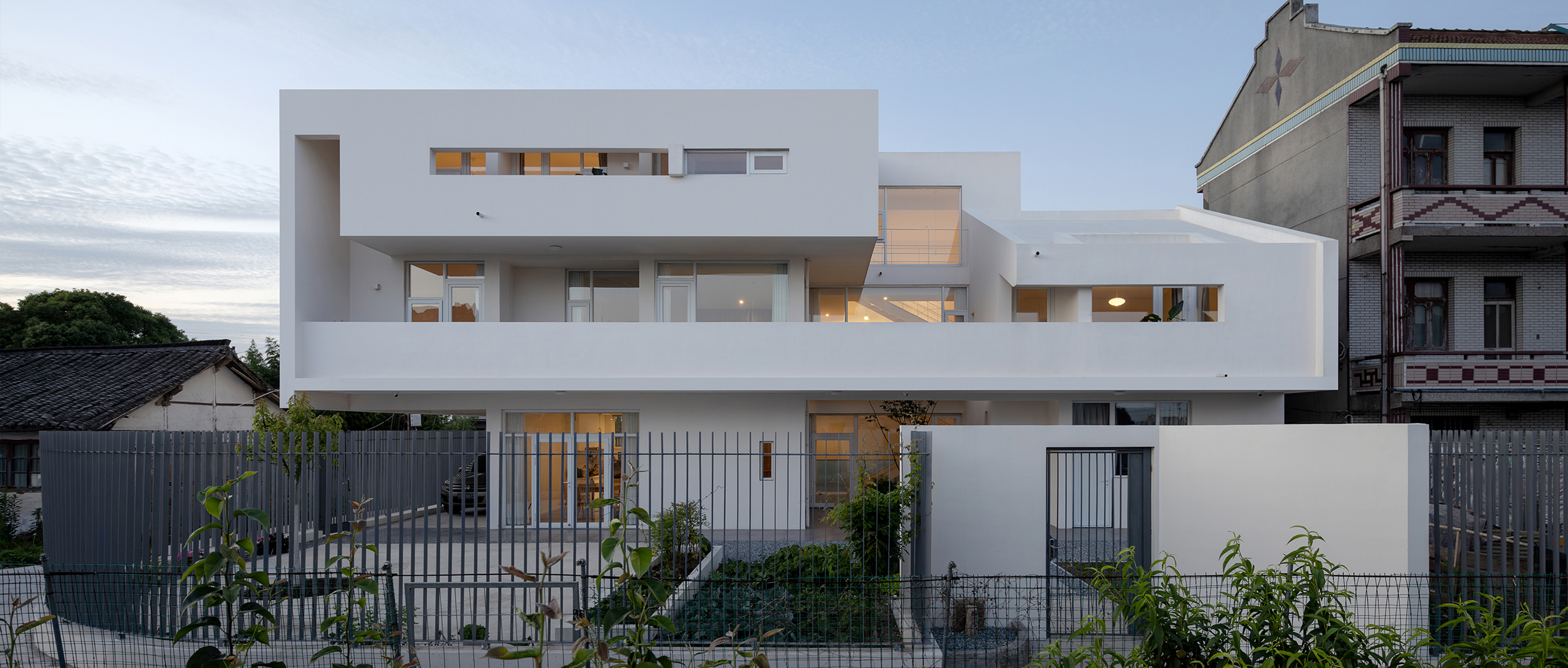
Sous le ciel noir nous voyons clair
La lampe est pleine de nos yeux
Nous habitons notre vallée
Nos murs nos fleurs notre soleil
Nos couleurs et notre lumière
La capitale du soleil
Est à l’image de nous-même
Et dans l’asile de nos murs
Notre porte est celle des hommes
Paul Eluard
创作一座园林是一种生成(devenir),生成一个配置(agencement)与外部世界相连。根据法国哲学家德勒兹(Gilles Deleuze)的理论,生成—园林是一处根茎(rhizome),它对传统古典园林进行了解域(déterritorialiser)后的再结域(reterritorialiser),园林被解域,与现代住宅系统相遇再重新结域,沿着逃逸线(ligne de fuite)绘制自身的地图(carte),形成一处新的根茎。根茎式的艺术创作无需扎根,只需沿着抽象线加速穿越(passer entre),放射出微观的粒子(des particules microscopiques),生成分子性的艺术配置,进行一种游牧式的创作。新的创作是根茎式的、游牧式的,让层与根产生断裂,沿着逃逸线形成自由的笔触,模仿与谱系是拙劣且无趣的,不需要扎根,没有开端没有终点,根茎游牧民绘制自身的地图,成为处于之间(être-entre)的分子性的存在。
Garden design is a kind of becoming, to become an arrangement that could be connected with the world. According to the theory of French philosopher Gilles Deleuze, becoming-garden is a rhizome, which deterritorializes classic garden and then reterritorializes it when meeting residential system of modern architecture, drawing its own map along the line of flight to become a new rhizome. Artistic creation of rhizome rather than to take root only needs to speed up and pass through along the abstract line, radiating microscopic particles, becoming molecular artistic arrangements, and performing nomadic creation. The new creation is rhizomatous and nomadic, breaking the connection between layers and the root, forming free brushes along the line of flight. Imitation and pedigree are clumsy and boring, no roots no beginning and no end point, rhizome-nomads drawing their own maps, becoming molecular being-among.
01 一亩园(方案)
One Mu Garden
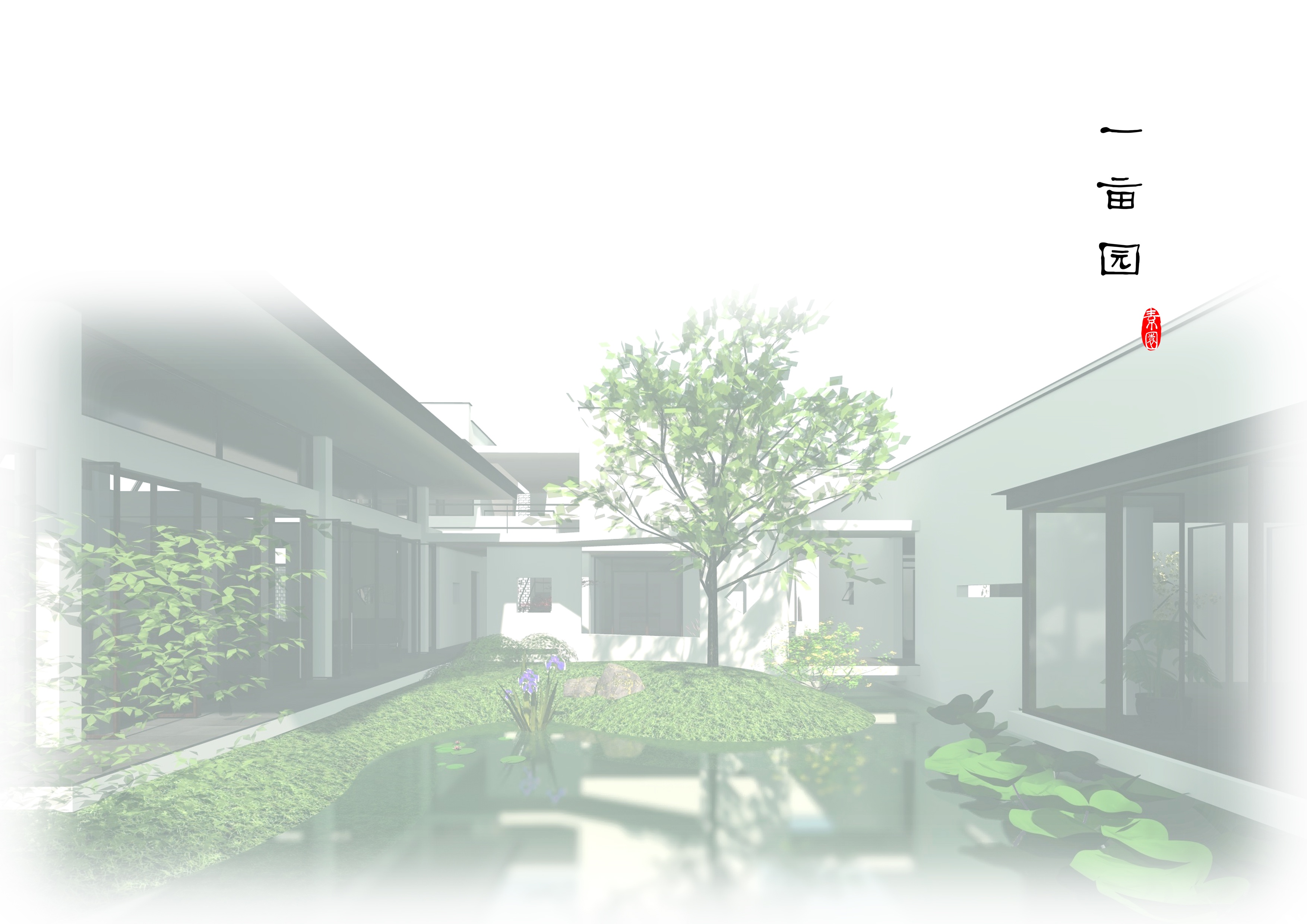
主园 Main garden ©柯笠建筑 Atelier LI
2016年的夏天,我们在苏州设计了一亩园。基地选择是意境内向化的,我们想创造一个内在氛围远大于外部环境影响的园林居所。
In the summer of 2016, we designed One Mu Garden in Suzhou (one mu = 666.67m2). The site selected is introverted. We wanted to create a garden-residence, where the inner atmosphere is much more important than the surrounding environment.
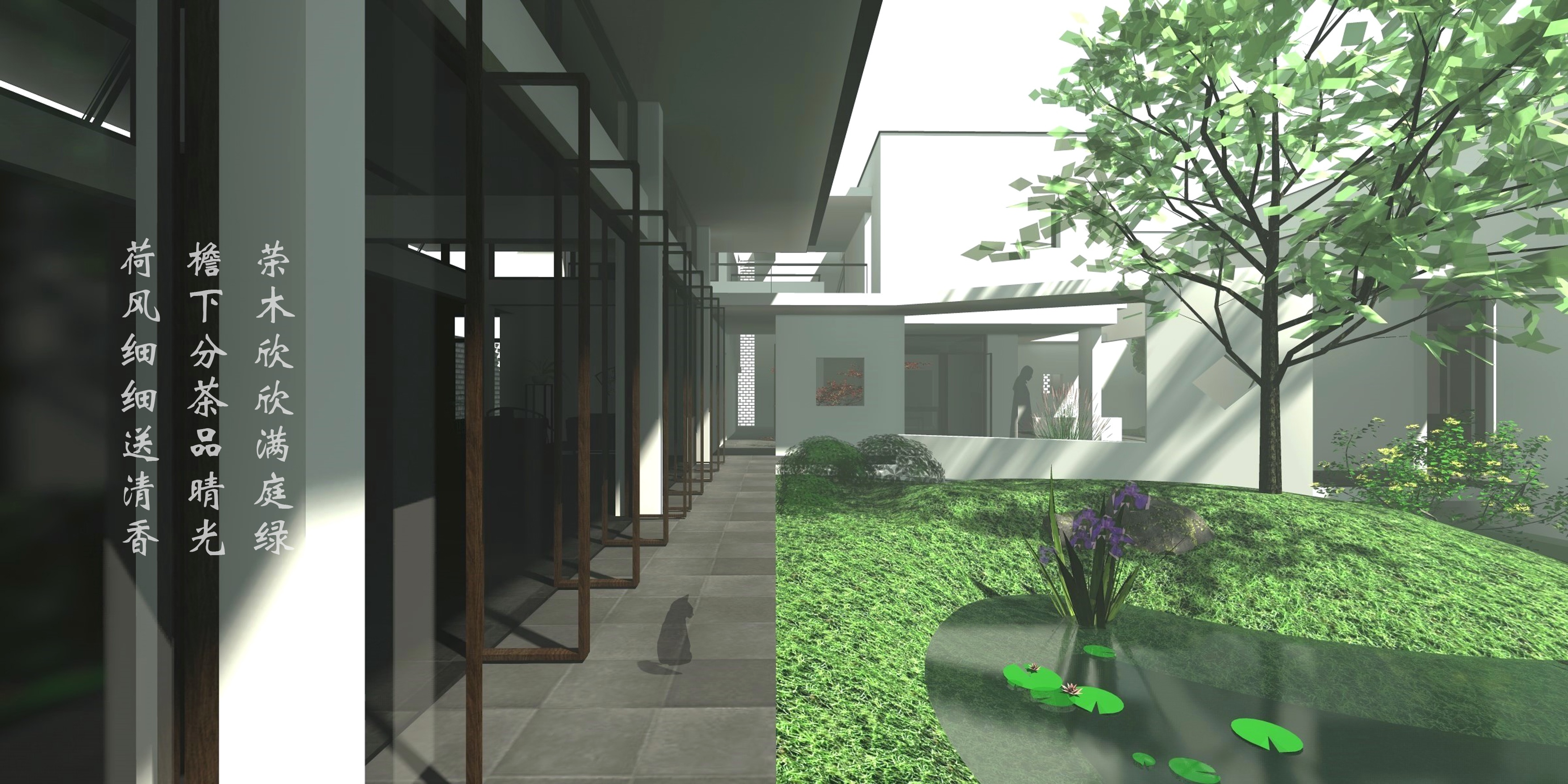
主厅檐廊 Corridor of the salon ©柯笠建筑 Atelier LI
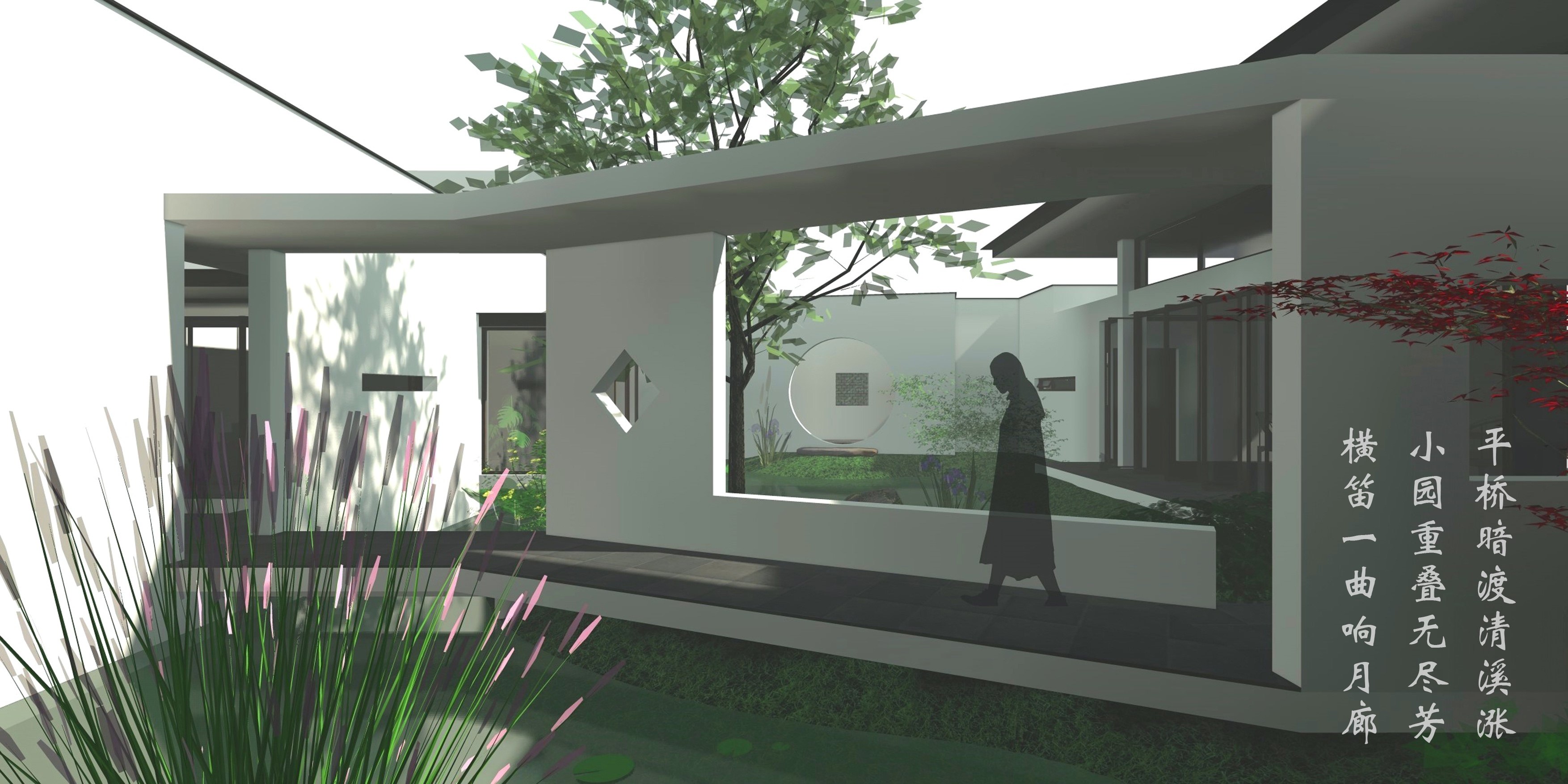
廊桥 Corridor-bridge ©柯笠建筑 Atelier LI
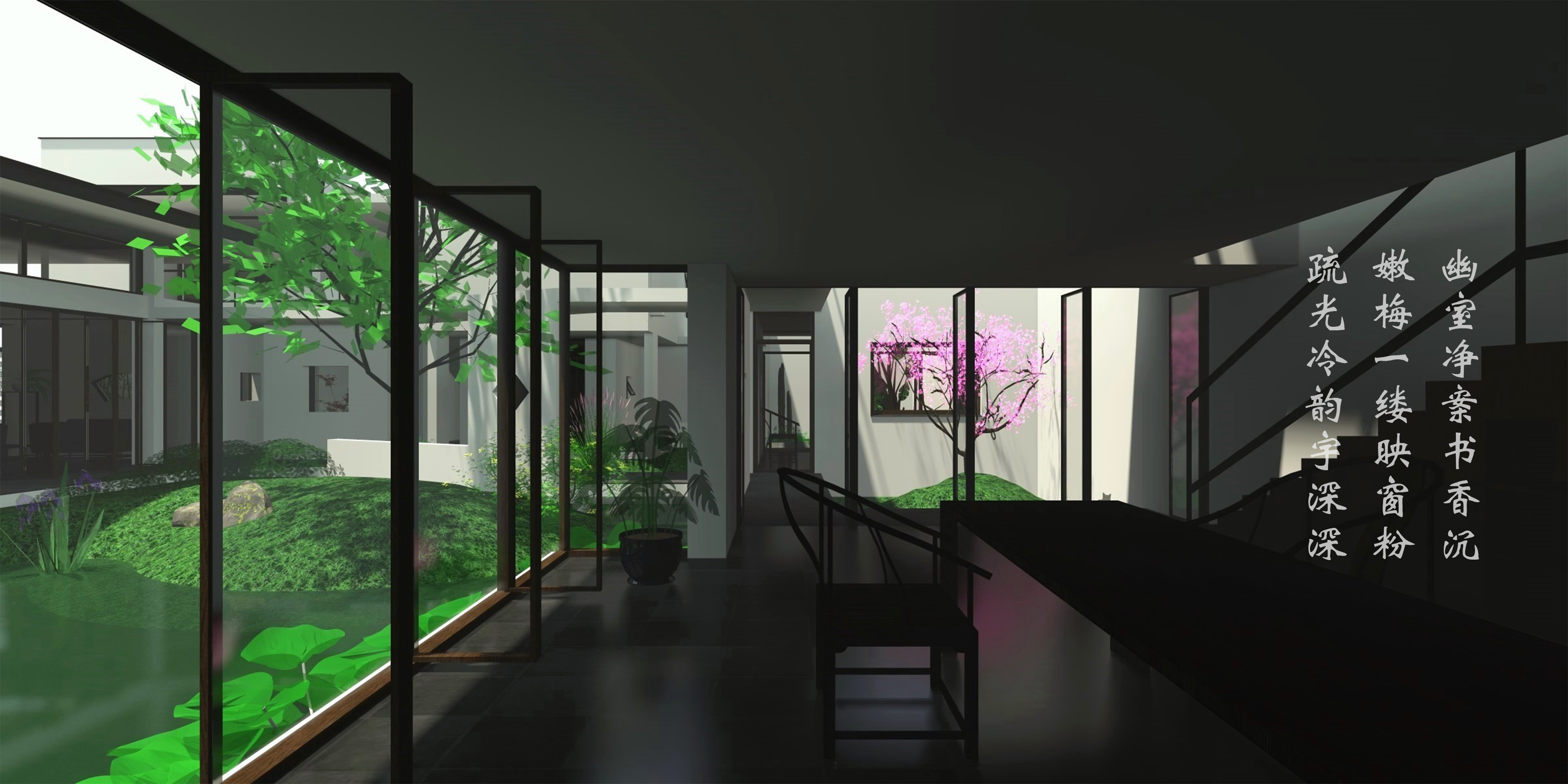
工作间 Atelier ©柯笠建筑 Atelier LI
从整体布局上来说,建筑分布在基地的外围,围合形成庭园。入口设置在南面,左侧是菜圃,右侧是车库。推门进入,折线路径夹在两道墙之间,让人想起艺圃的蔷薇爬藤。经过一道路径的转折后,可在圆洞门前驻足,虽不能进入,却可以先看一眼主园之景。进入的路径仍需要由西侧先进室内,通过前厅来到主厅,抵达庭园。
The site plan shows that buildings are distributed in the periphery,forming gardens in the center. The entrance is located on the south side with a yard for vegetable on the left and a garage on the right. When we enter the door, the path emerges between two walls, bringing the memory of the rosebush of the classic garden Yipu. After turning a corner, we arrive at a moon gate, showing a preview of the landscape of the main garden. For entering the garden, we still need to go indoors on the westside firstly, pass through the entrance hall and then arrive at the main salon.
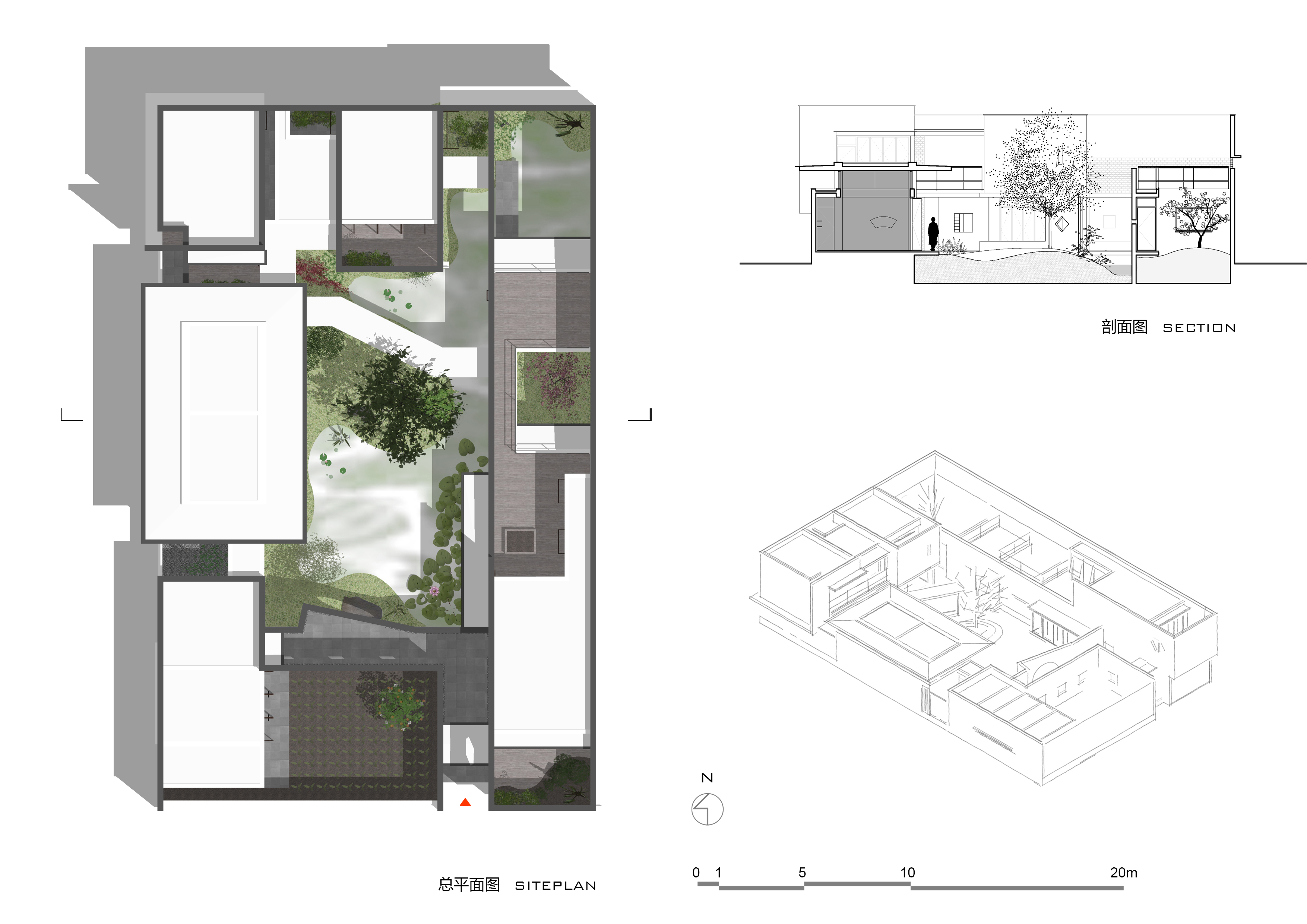
©柯笠建筑 Atelier LI
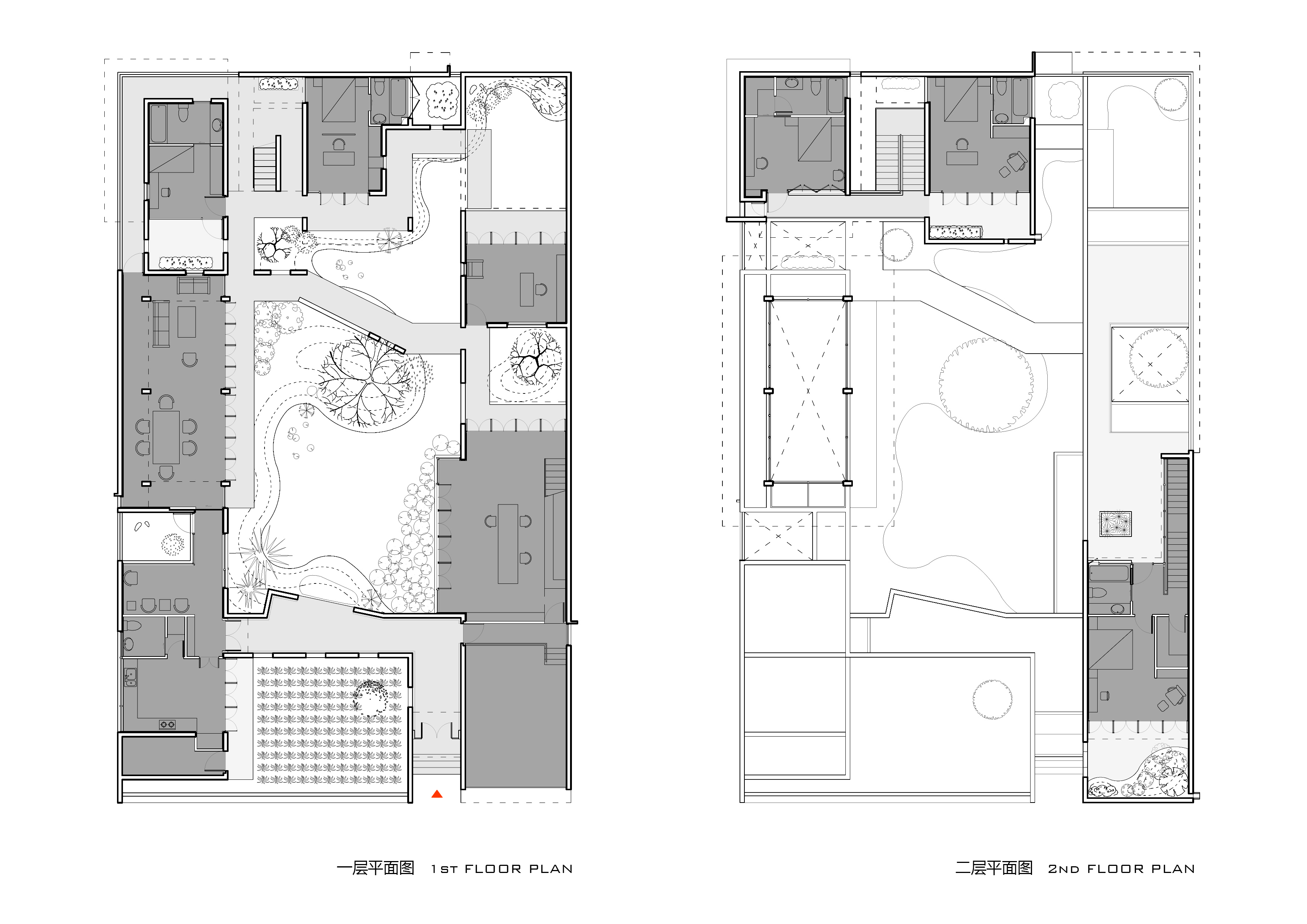
©柯笠建筑 Atelier LI
一道折线形的廊桥穿过庭园,将其切分为两部分,南部靠外的主园和北部的内园。主园是公共区域,相对开敞,东西两侧有工作间和主厅相对;内园相对私密,空间向东北曲折展开。庭园的水势像留园,从主园南端的圆洞门起始,经廊桥下穿过,向内蜿蜒,其尽头藏于东北端的一处水庭。
A corridor-bridge in the shape of polyline cross over the central space, dividing it into two parts, the main garden in the south and the inner garden in the north. The main garden as the public zone is more open, with the atelier on the east side facing the main salon in the west; the inner garden is more private, spaces expand circuitously to the north-east. The water of the garden is like Liu Garden, starting from the moon gate at the southmost end of the main garden, passing under the corridor-bridge, meandering inwards and finally hiding its end in a courtyard in the northeast of the site.
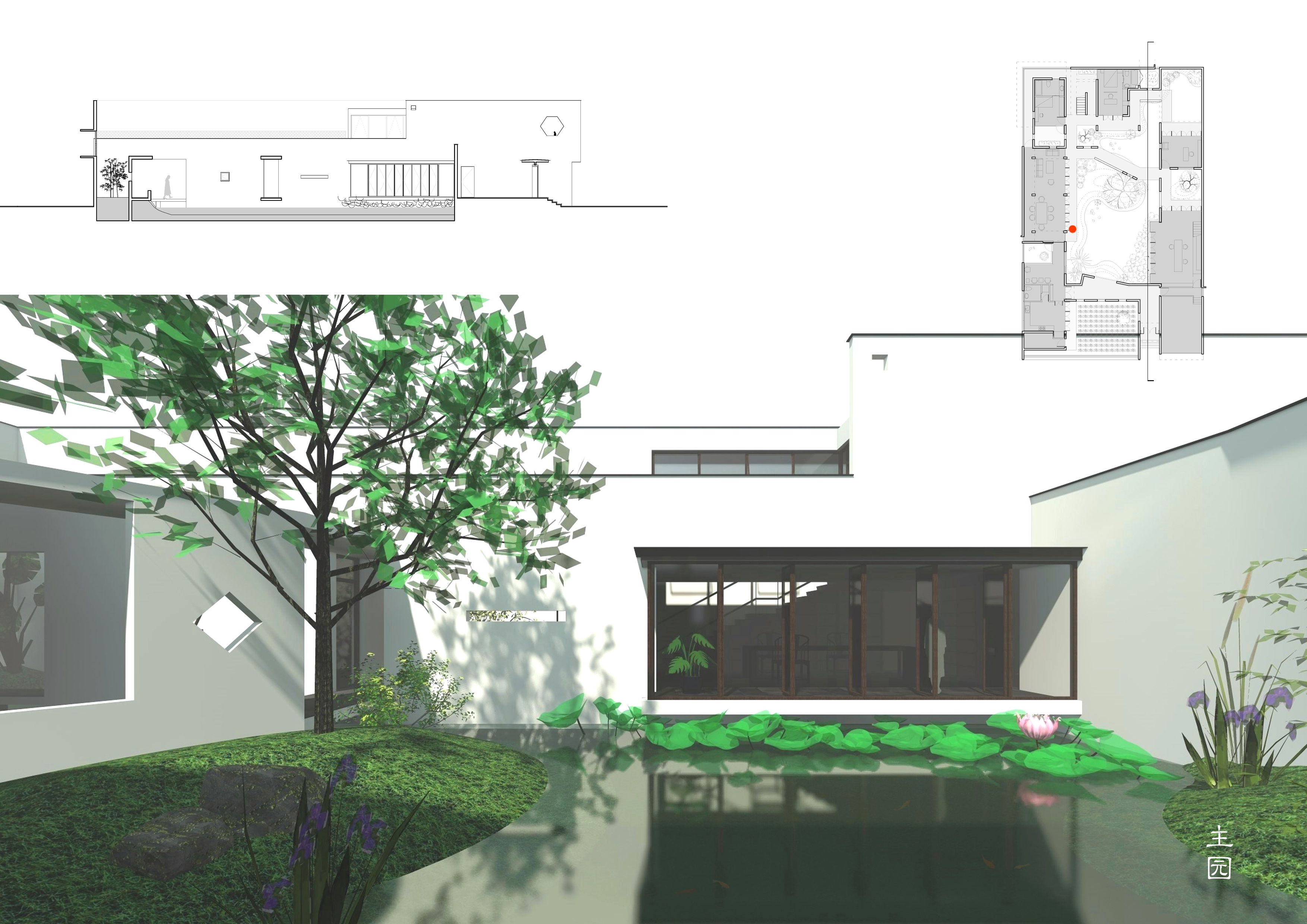 主园,看向工作间 Main garden, viewing the atelier ©柯笠建筑 Atelier LI
主园,看向工作间 Main garden, viewing the atelier ©柯笠建筑 Atelier LI
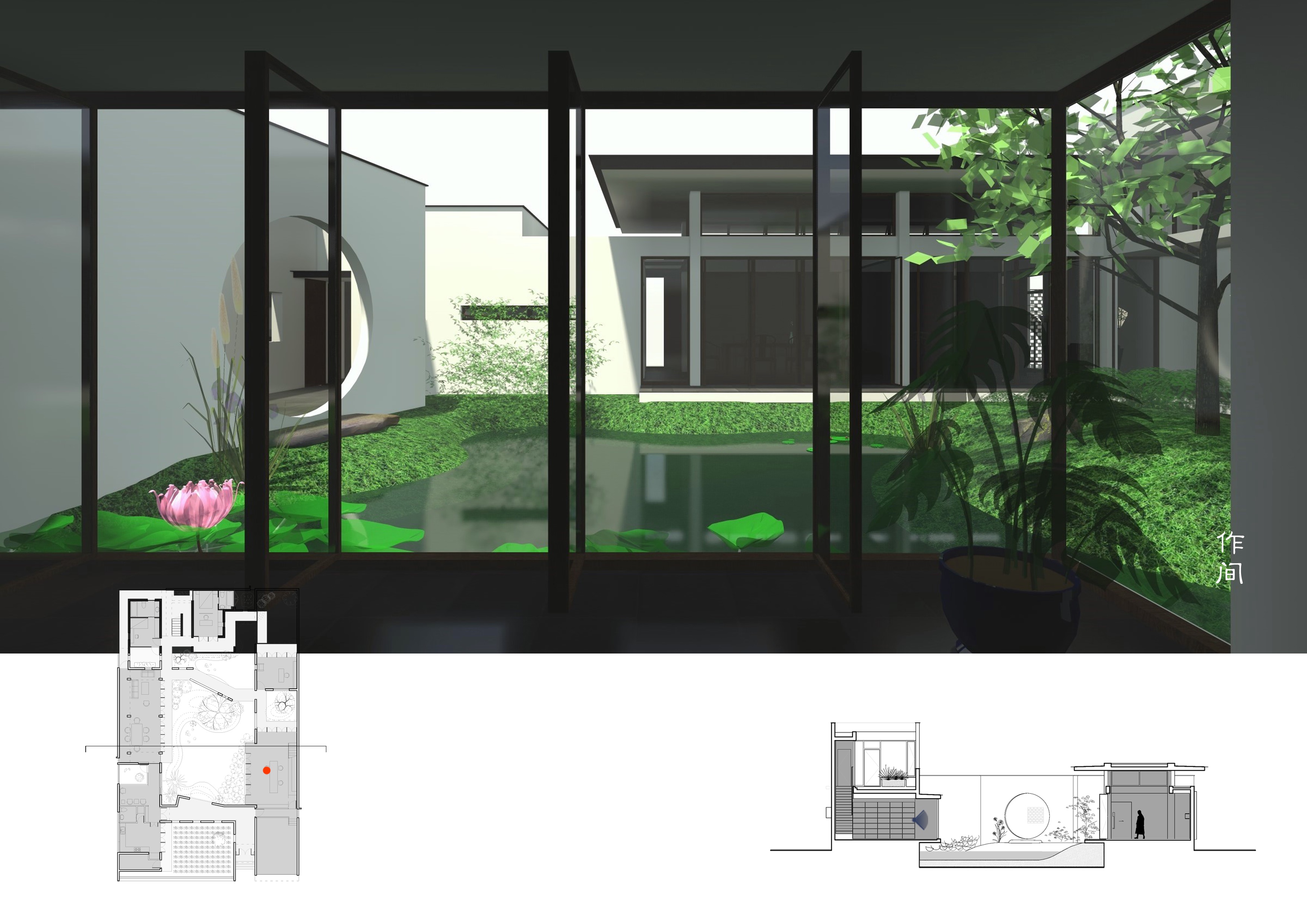
工作间,看向主园 Atelier, viewing the main garden ©柯笠建筑 Atelier LI
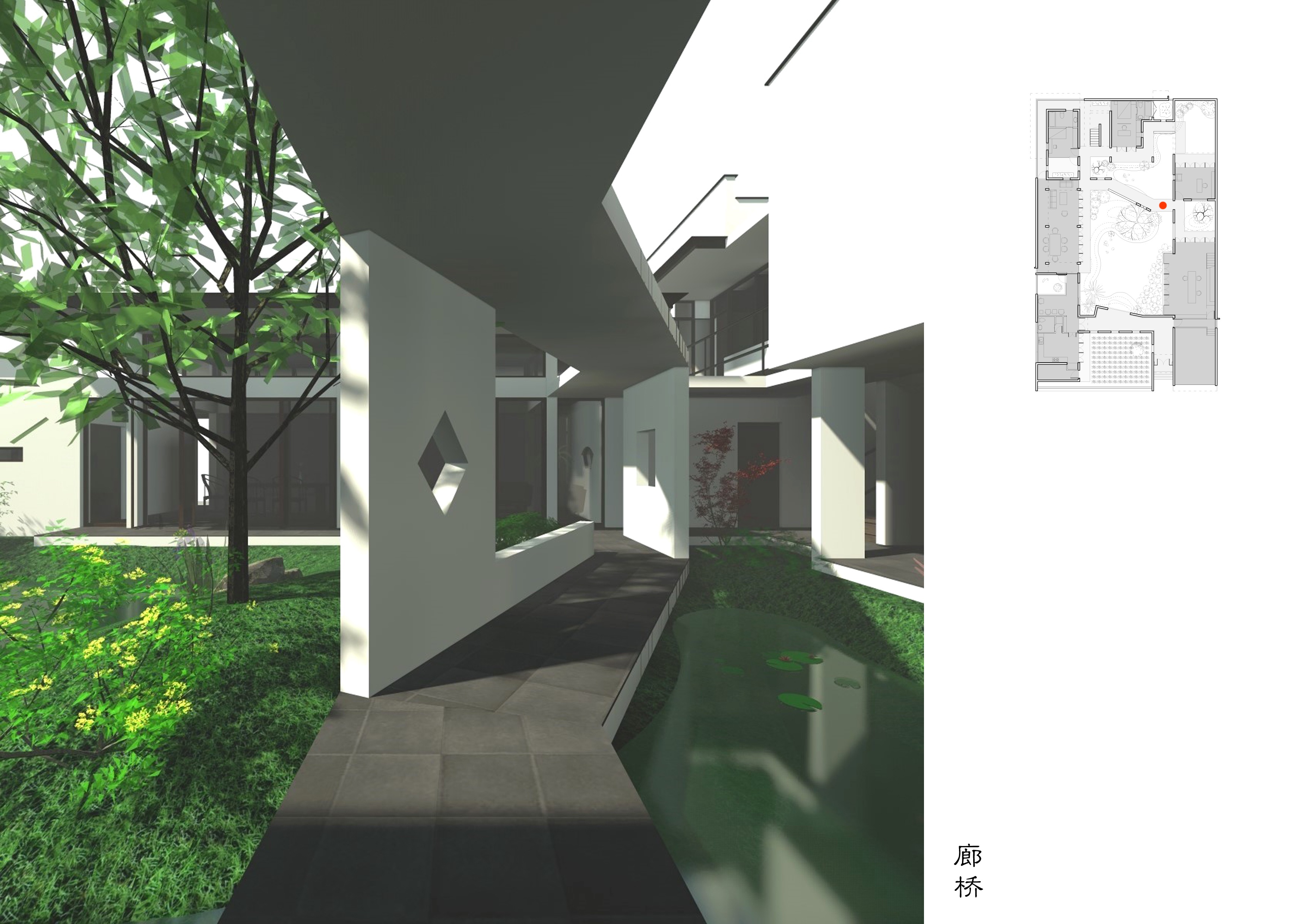
Corridor-bridge ©柯笠建筑 Atelier LI
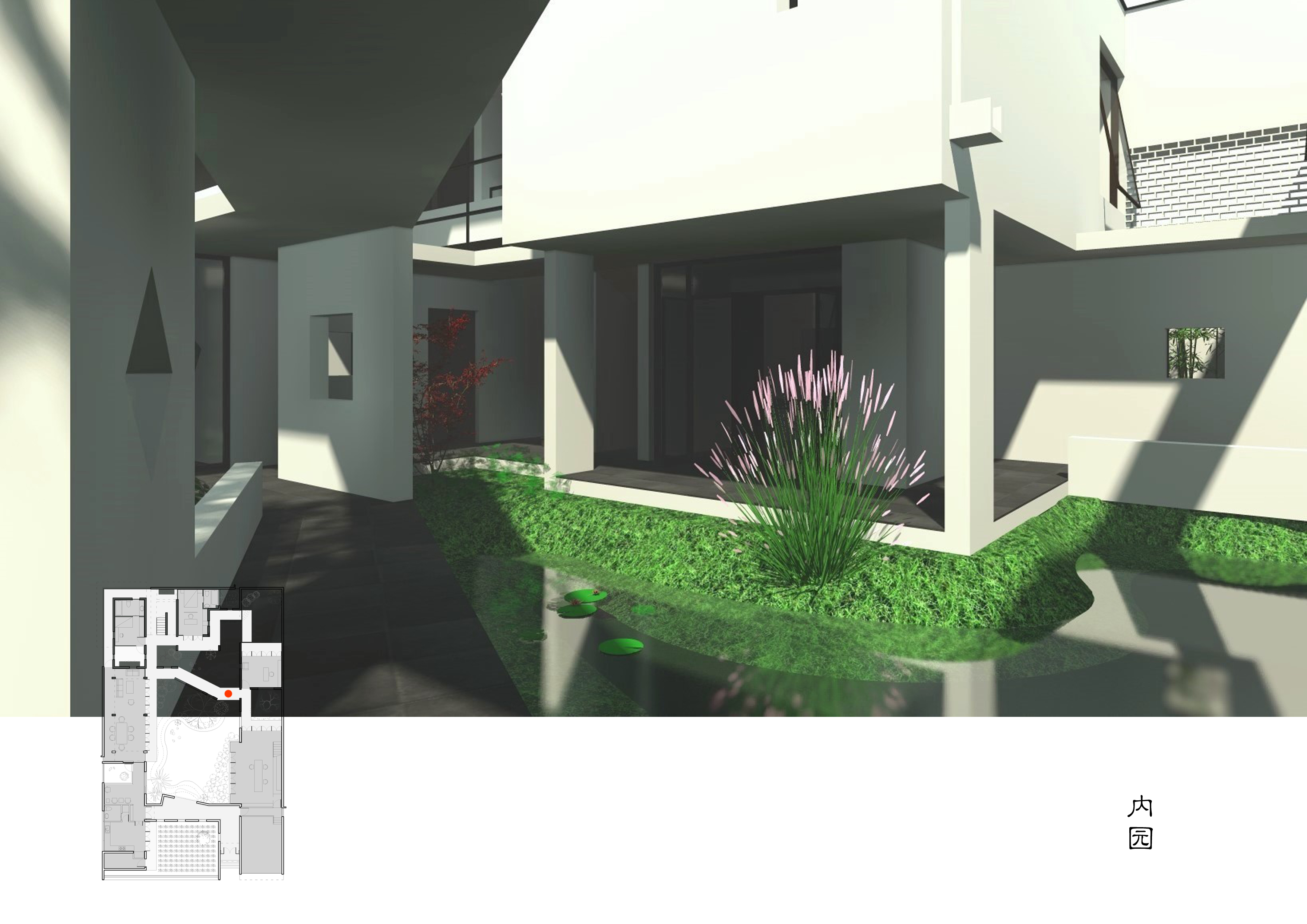
Inner garden ©柯笠建筑 Atelier LI
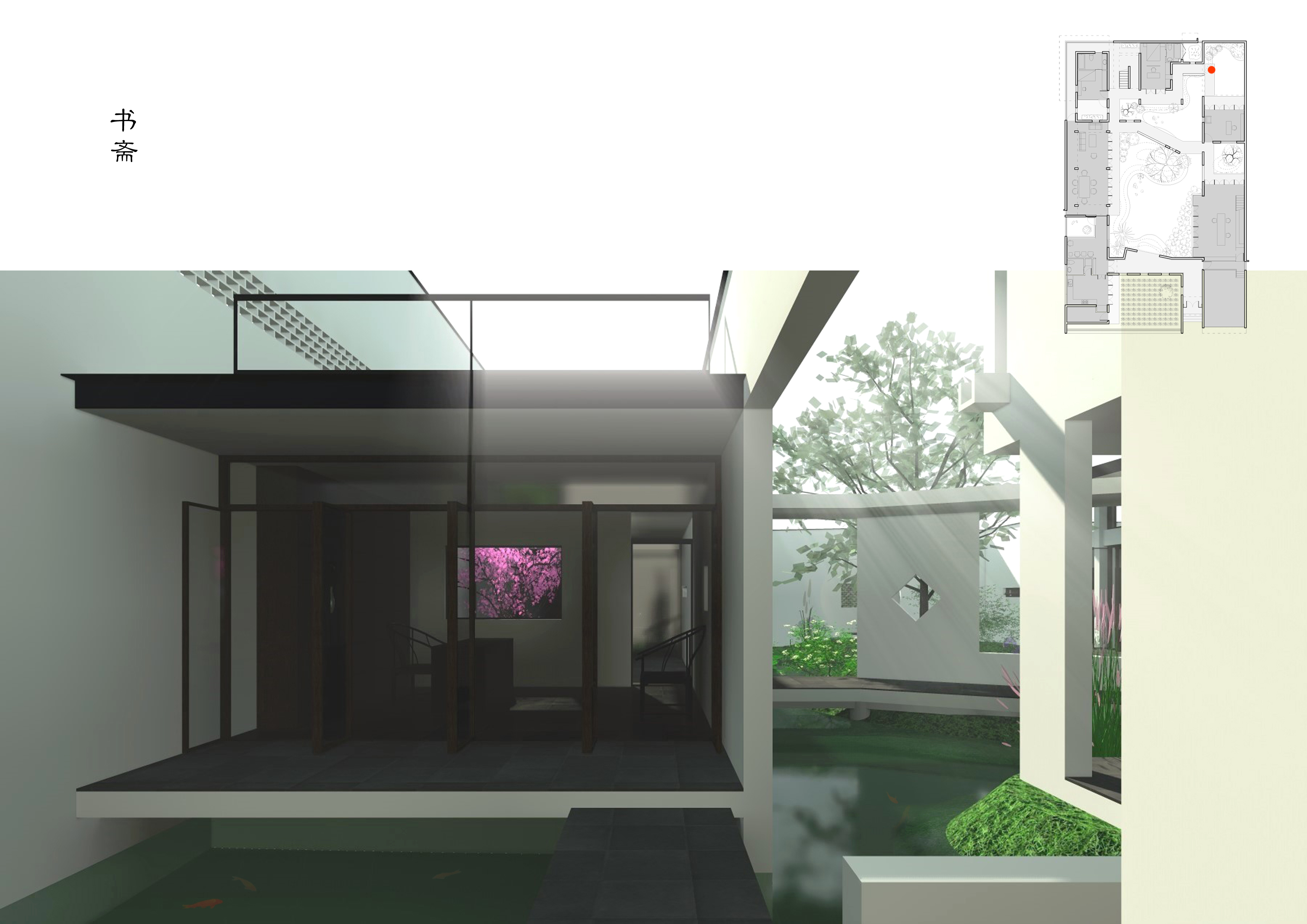 Study ©柯笠建筑 Atelier LI
Study ©柯笠建筑 Atelier LI
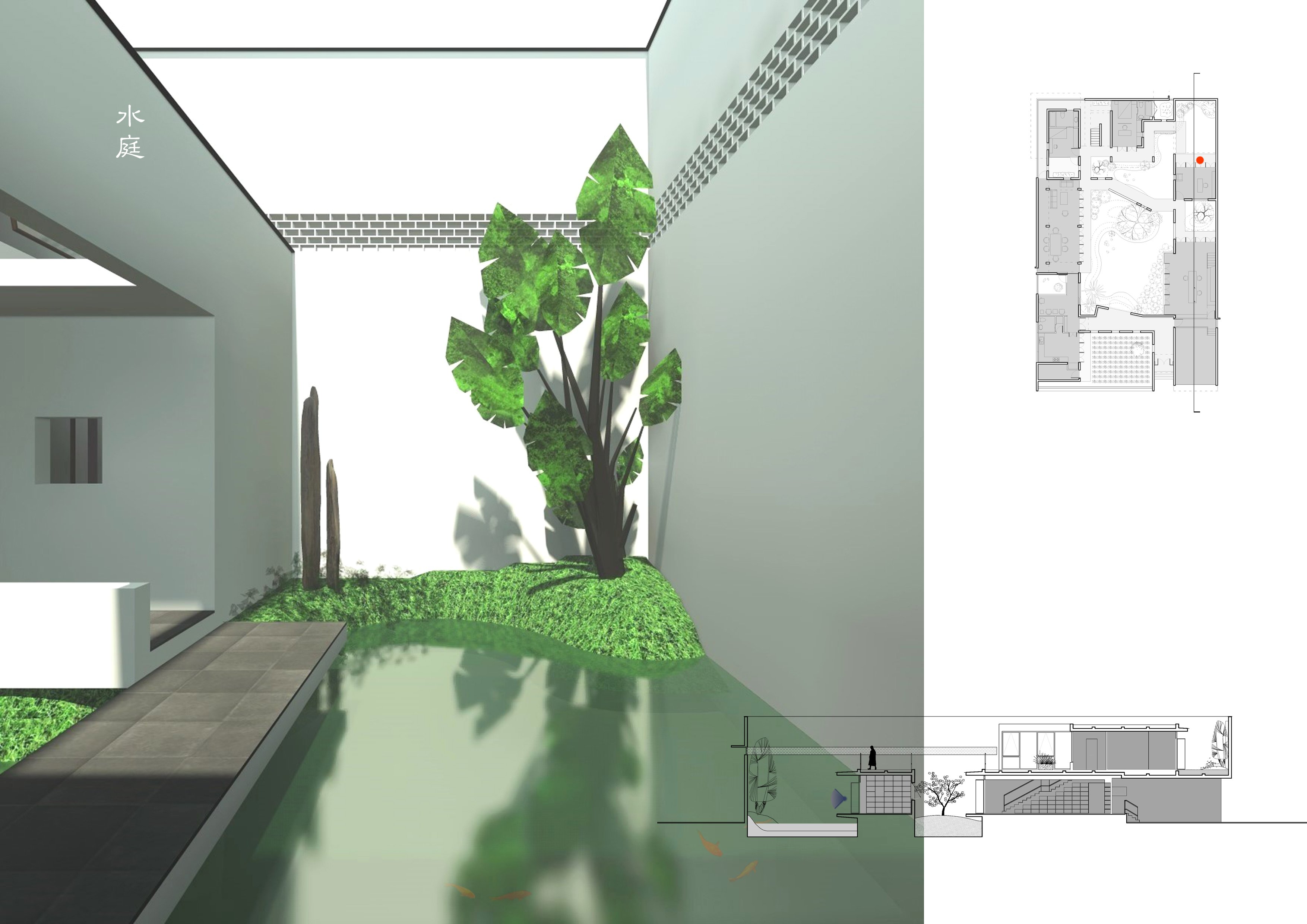
Water-courtyard ©柯笠建筑 Atelier LI
建筑的檐廊作为曲折的廊道系统,形成有趣的游走路径;一系列的天井内院层层叠套,在私密性递增的同时,室内和室外的界限也被进一步模糊。在这些天井之间,各个房间有不同的院景,形成各自的内在氛围。西北和东南的建筑做了局部二层,那些带天井的卧室和露台,增加了这个现代园林的立体之感。
These corridors as the circulation system form interesting paths for promenade; a series of courtyards set one by one, make the limit vague between interior and exterior spaces, meanwhile the privacy increases progressively. Among these courtyards, each room has different view, forming inner atmosphere of its own. The northwestern and southeastern parts of the buildings were designed as two-story volumes. A kind of three-dimensional appeal was add to this modern garden-villa by those terraces and rooms with courtyards on the upper floor.
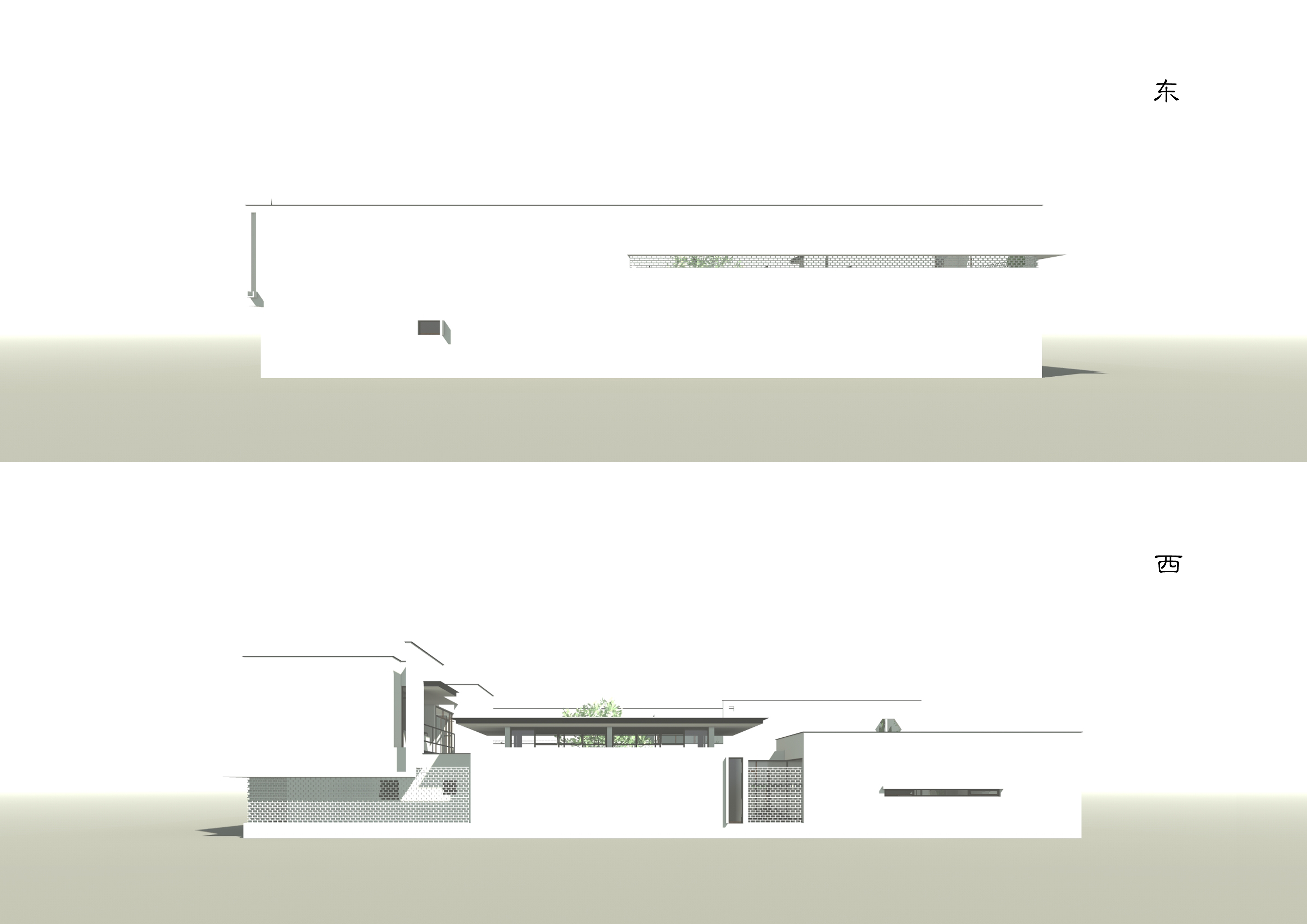 East elevation and west elevation ©柯笠建筑 Atelier LI
East elevation and west elevation ©柯笠建筑 Atelier LI
02 四合园墅(方案)
Quadrangle Garden Villa
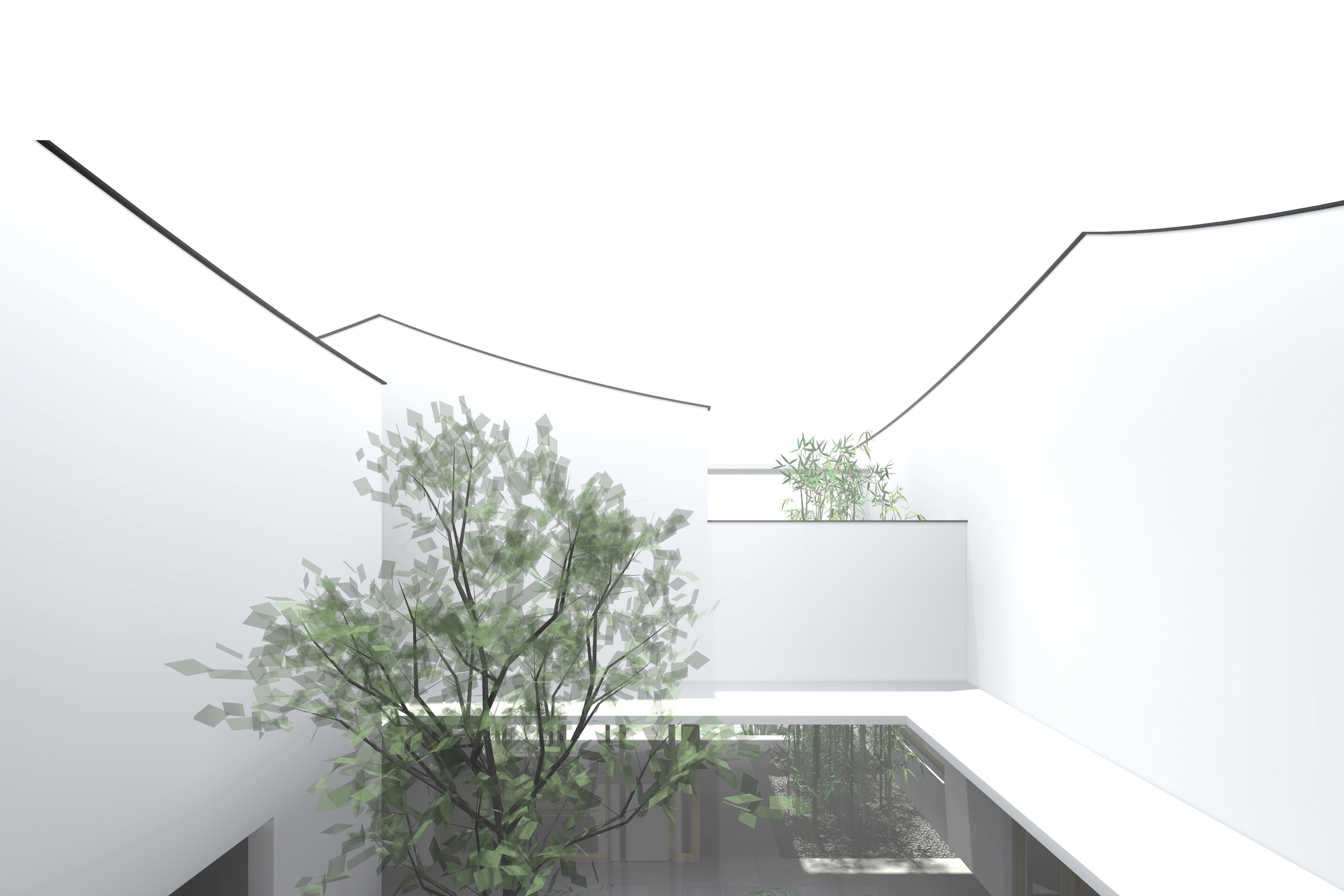
中庭院,三个白色体量 Central courtyard, three white volumes ©柯笠建筑 Atelier LI
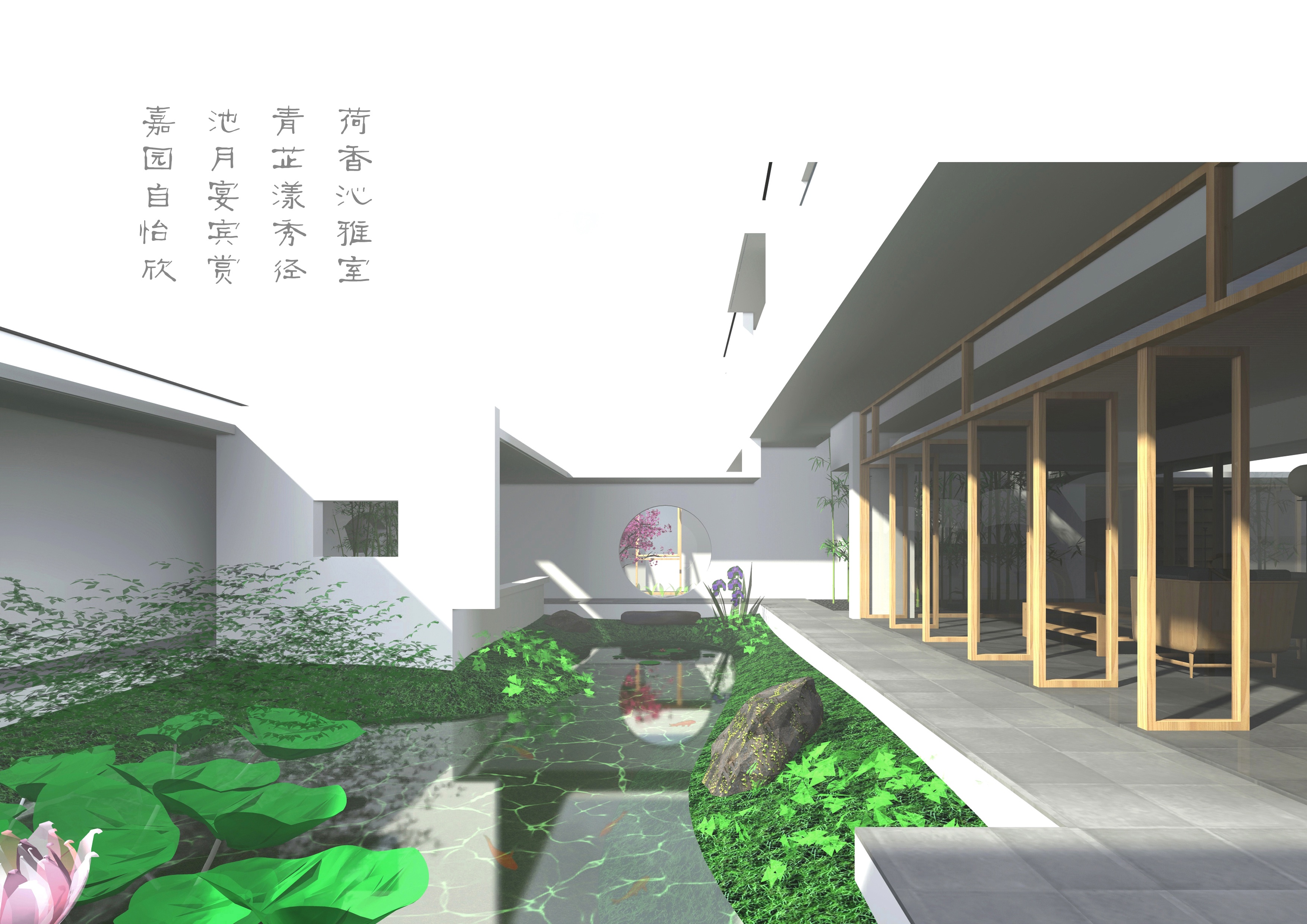
主庭园 Main garden ©柯笠建筑 Atelier LI
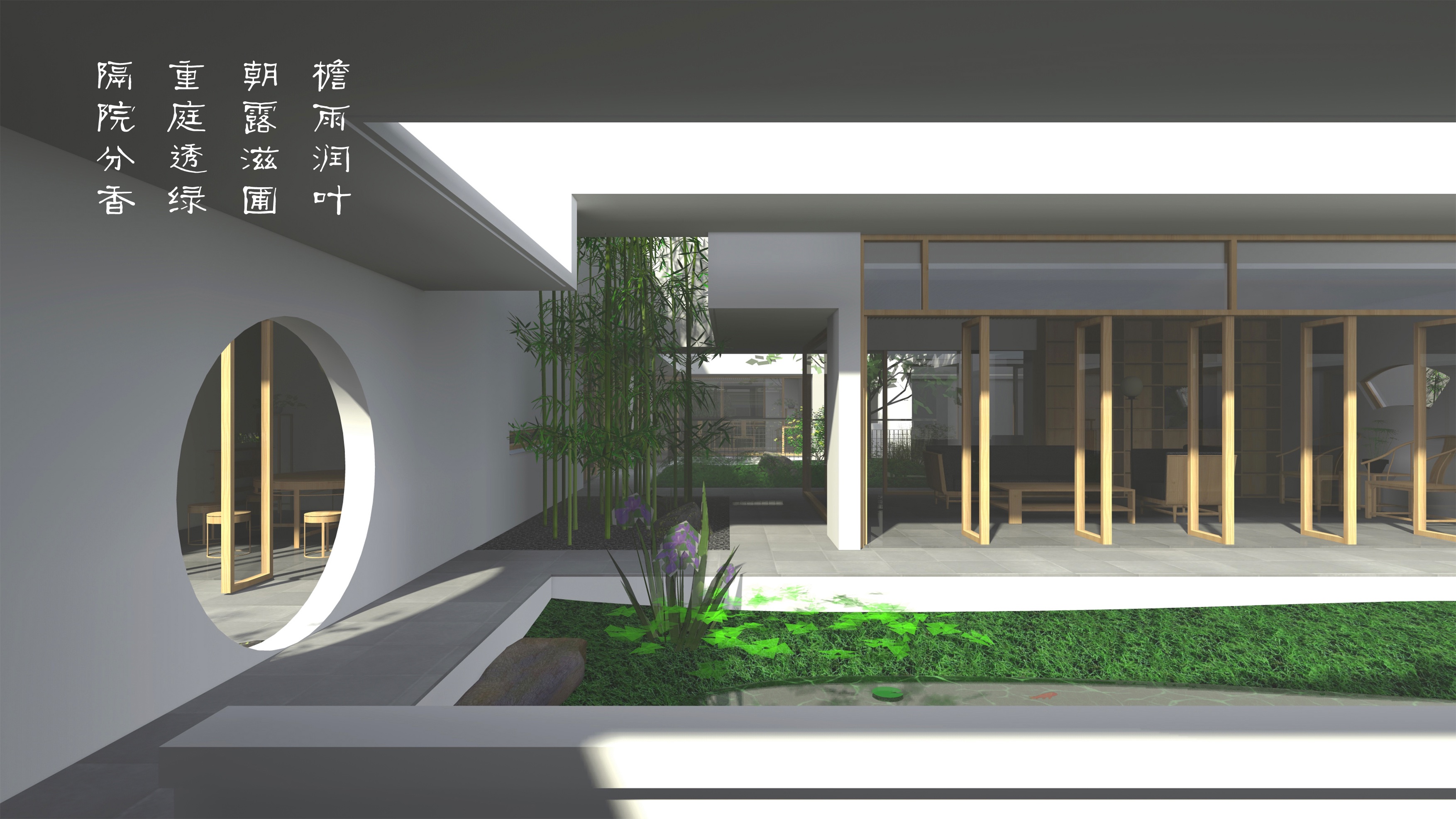 主庭园, 由水榭看向中庭院 Main garden,viewing central courtyard from water-pavilion ©柯笠建筑 Atelier LI
主庭园, 由水榭看向中庭院 Main garden,viewing central courtyard from water-pavilion ©柯笠建筑 Atelier LI
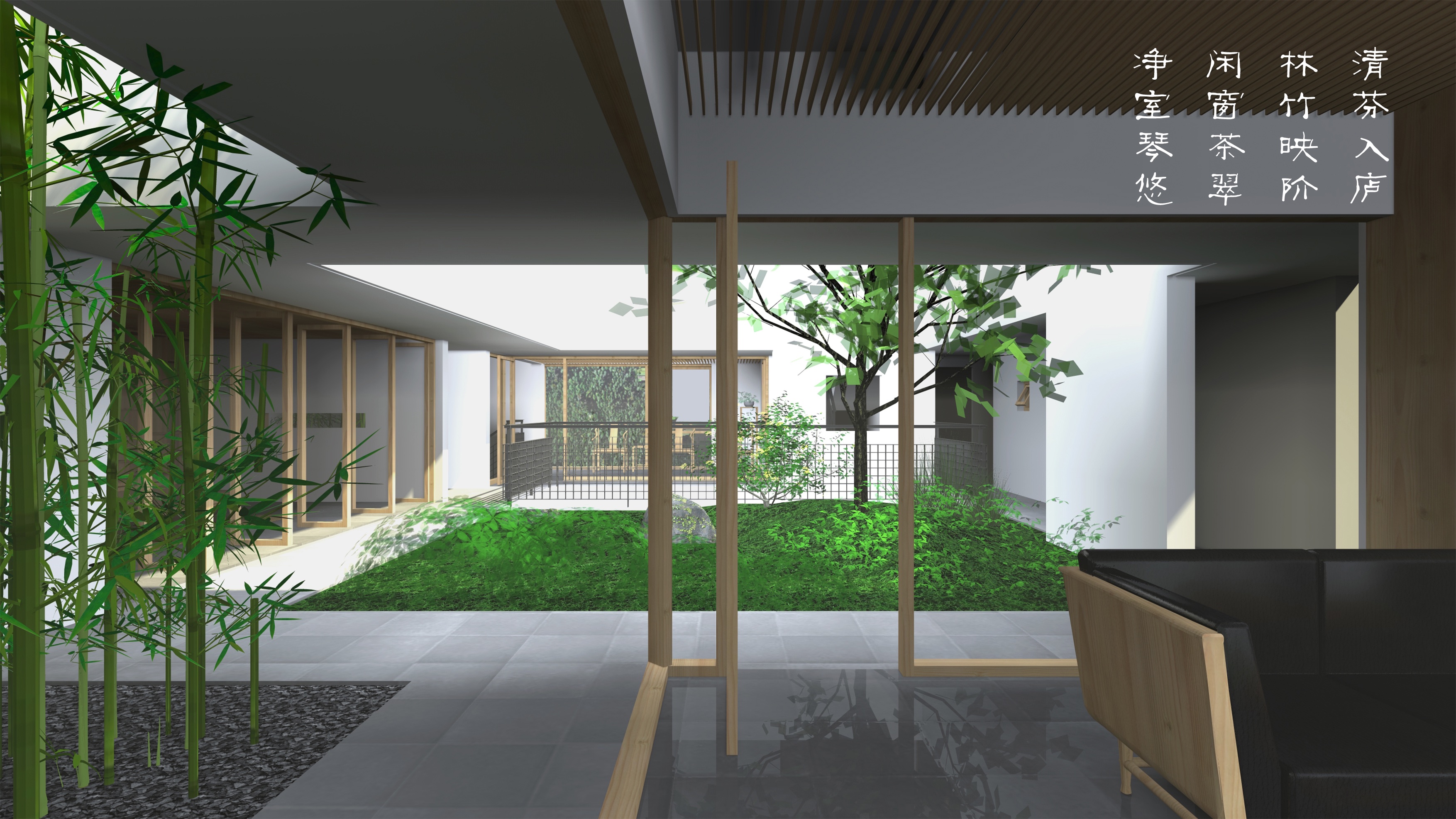 由主厅看向中庭院 viewing central courtyard from main salon ©柯笠建筑 Atelier LI
由主厅看向中庭院 viewing central courtyard from main salon ©柯笠建筑 Atelier LI
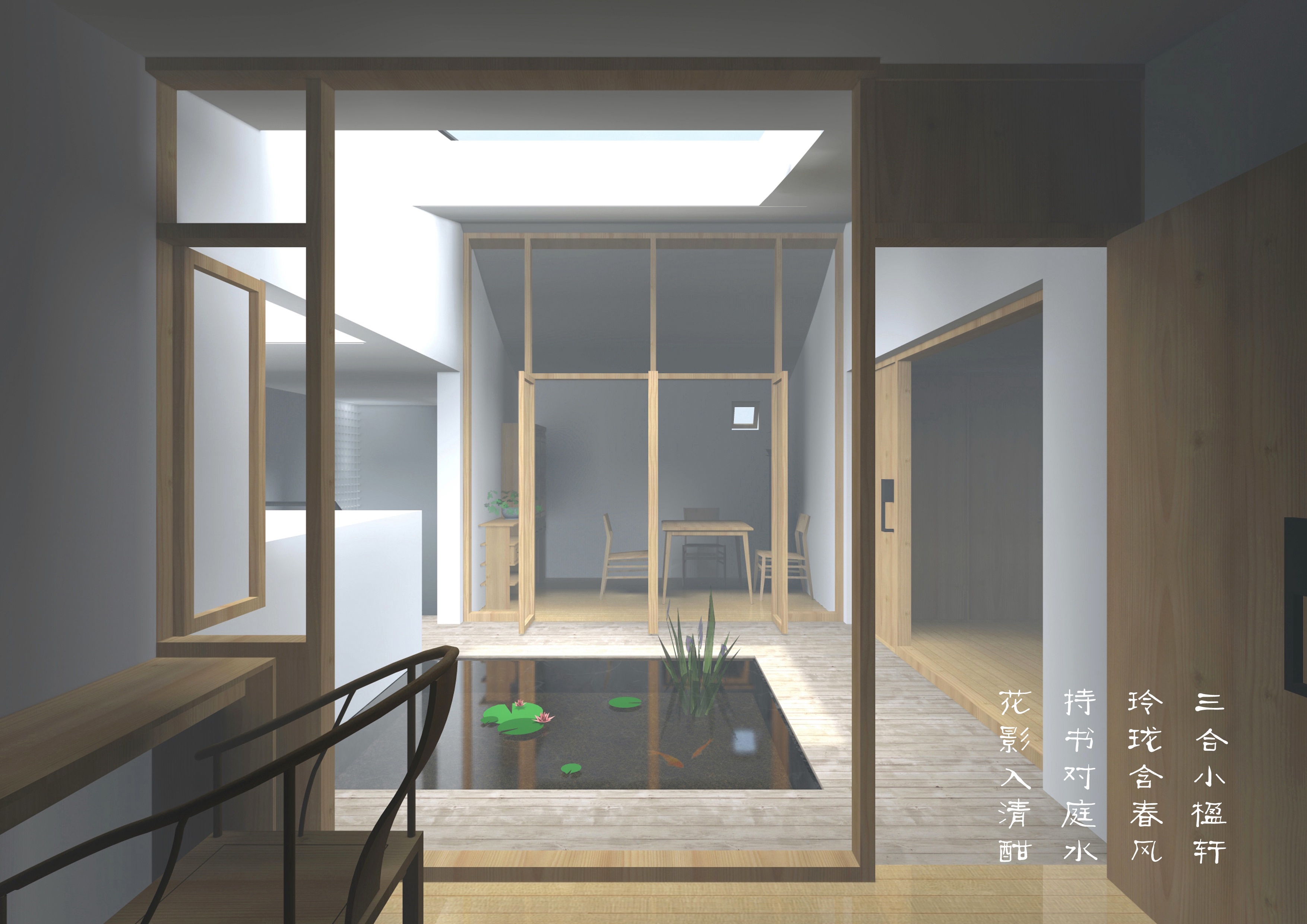
二层三合小院,由两间卧室一间书房围合 2nd floor courtyard, surrounded by 2 bedrooms and 1 study ©柯笠建筑 Atelier LI
这个项目的基地位于苏州南郊的一个别墅区,业主希望将原有的独栋别墅拆除,重建一栋现代的园墅。大多数独栋别墅区从平面上看会得到院墙围成一圈而房子在中间的图底关系,因此形成房子只是室内而院子只是空地的单调场所,没有任何室内外的空间渗透。
The site of this project is located in a villa district in the southern suburbs of Suzhou. The client wanted to demolish the old house and to build a modern garden-villa. Most villa districts show a figure-ground relation, a house set in the center with bounding walls surrounded, so that a boring area is formed. The house is only a volume containing its interior and the yard is just a piece of open land without any spatial permeation between interior and exterior.
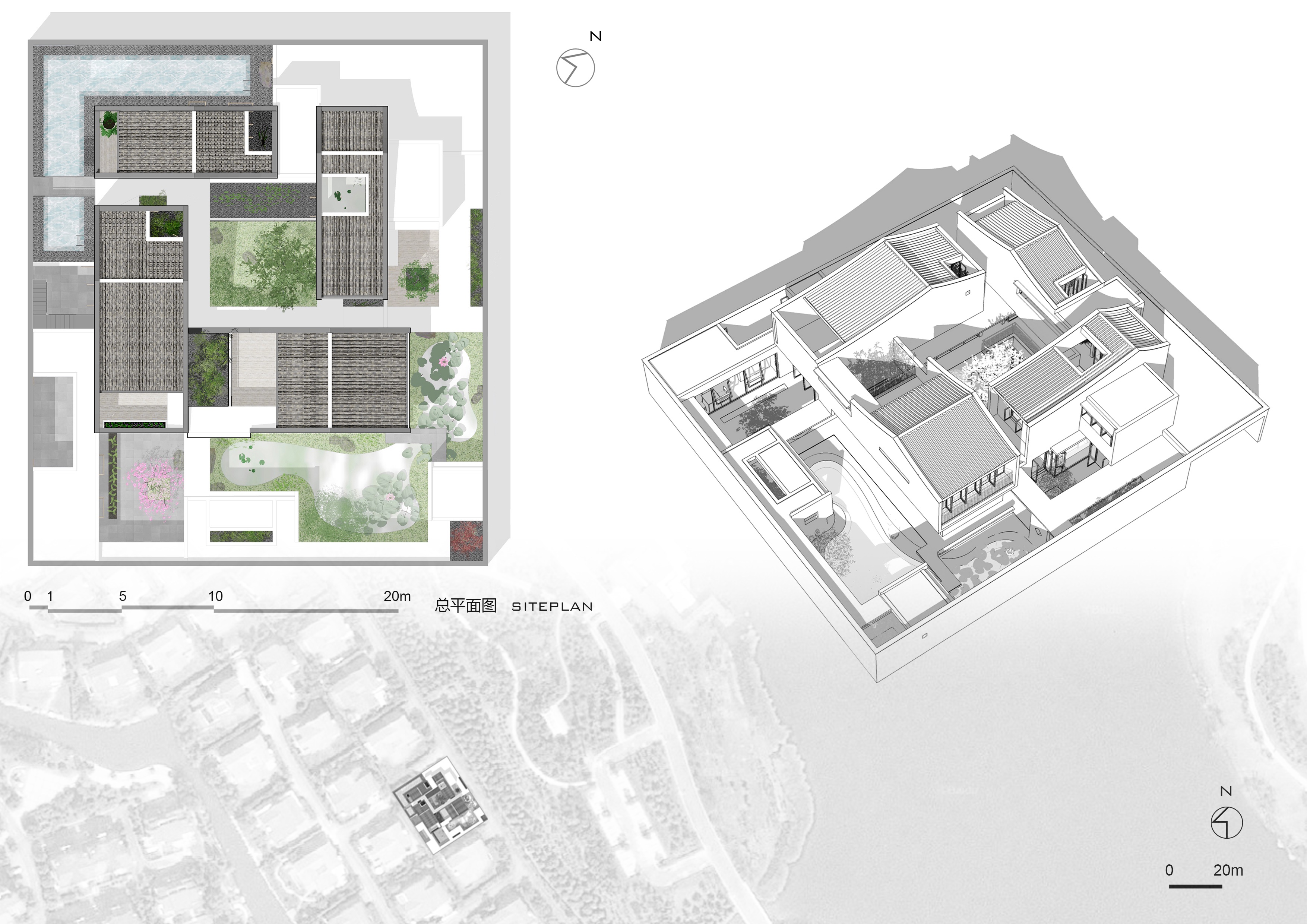
©柯笠建筑 Atelier LI
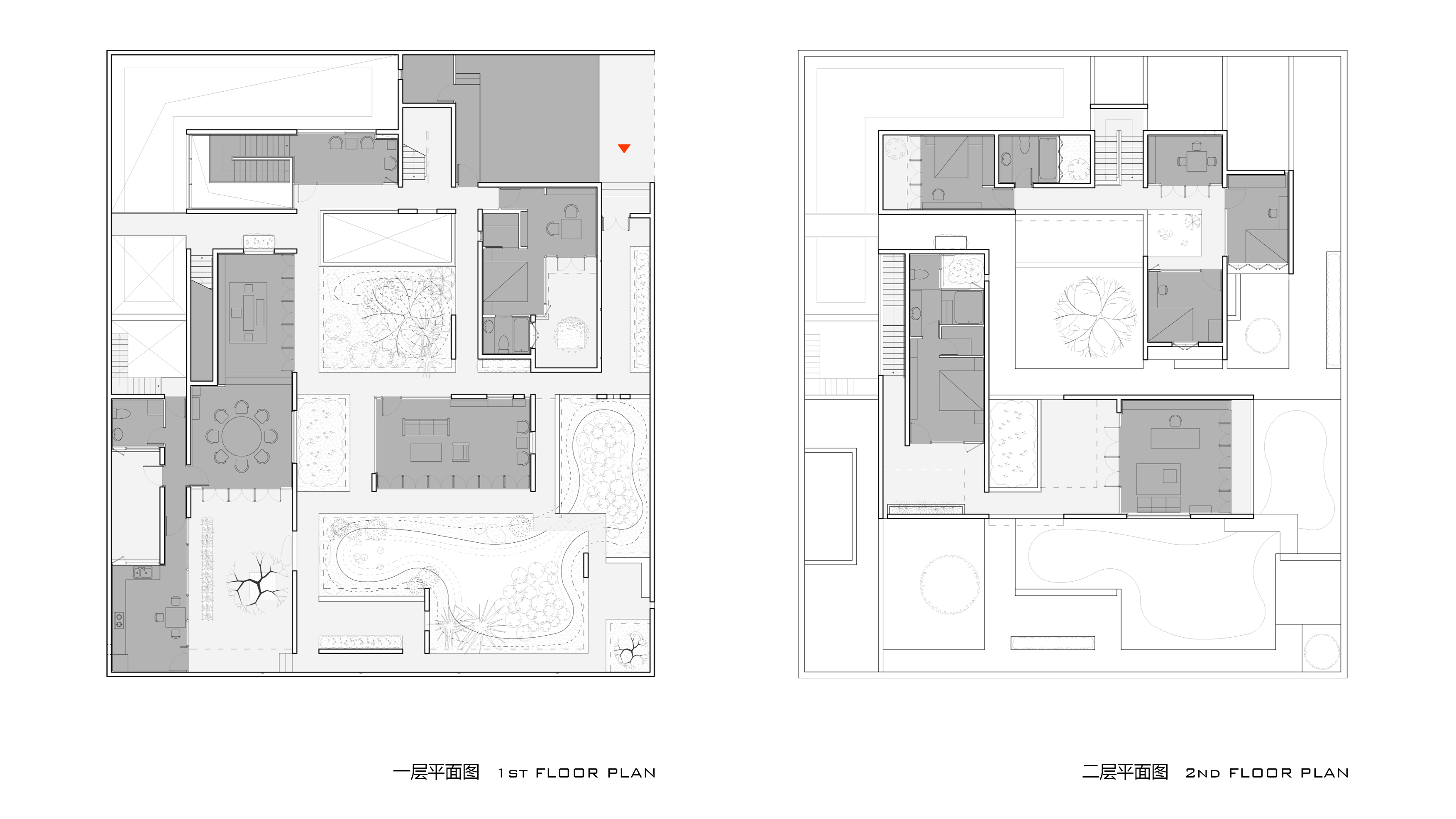 ©柯笠建筑 Atelier LI
©柯笠建筑 Atelier LI
我们的设计策略首先是将建筑拆分为4个二层的体量,围合出一个中庭院;其次,沿着东南的院墙设置边廊,必要的节点位置设置亭和榭,由此在建筑主体和边廊之间形成东南主庭园。人们从东北的入口进入园墅,沿着廊经过东南的主园游走进入中庭院,或先向西拐入中庭院后游东南的主园,由此内外的空间产生了有趣的游走互动体验以及丰富的层次感。南面透明的一楼主厅更增加了内外空间在视觉上的相互渗透。
Our design strategies are firstly to split the whole into four two-story volumes, forming a central courtyard; then corridors are set alone bounding walls and pavilions are placed at joint points when needed, so that a main garden is formed in the southeast of the site, between the main building and the corridors. People enter the villa by the entrance in the northeast, going along the corridors, passing through the main garden, arriving at the central courtyard, or turn to the west firstly, getting into the central courtyard and then visiting the main garden in the southeast. The inner and outer space provide an interesting promenade experience and a strong layering feeling. The transparent façade of the main salon in the southern volume intensify visually the permeation between inner and outer spaces.
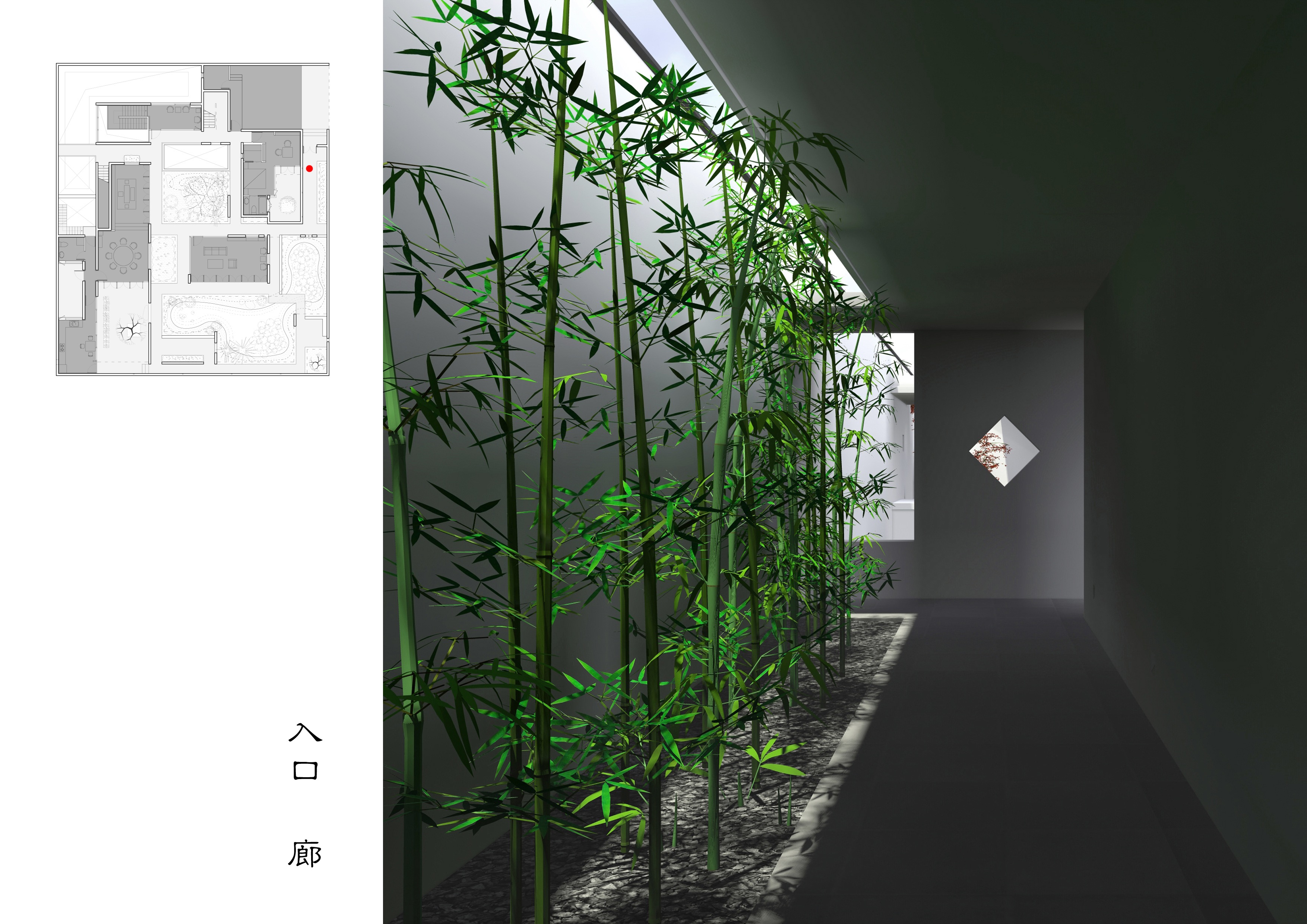
Entrance corridor ©柯笠建筑 Atelier LI
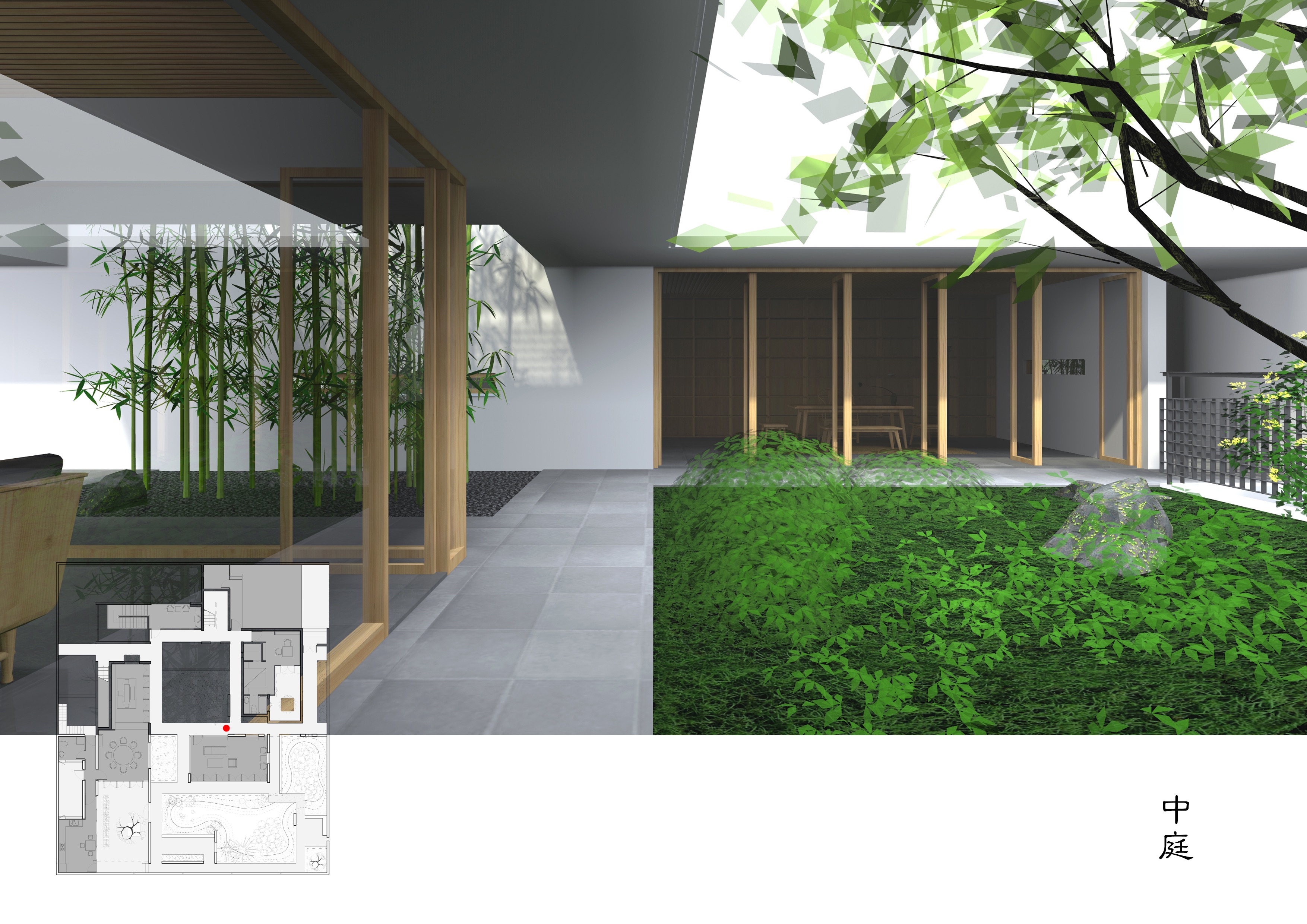 Central courtyard ©柯笠建筑 Atelier LI
Central courtyard ©柯笠建筑 Atelier LI
另一个重要的议题是,如何利用别墅建筑地上两层、地下一层的楼层布局形成立体的园林。我们在二层设置了一系列的天井、内院和露台,让人不觉得置身于楼上;在地下室设置下沉庭园和L型泳池,以及局部的地下通高空间,让人不觉身在地下。通过这样的设计手法,整个建筑的楼层概念被模糊化,在有限的空间中仿佛有了无限的体验。
Another important issue is to utilize the vertical layout of the villa building, two floors with a basement, to form a three-dimensional garden. A series of courtyards and terraces are placed on the 2nd floor, which make people forget the floor; A “L” shaped swimming pool, a sunken courtyard and duplex space are set, which make people forget that they are on the basement floor. In this way the conception of “Floor” is fuzzified, there seems to be infinite spatial experiences in this limited building.
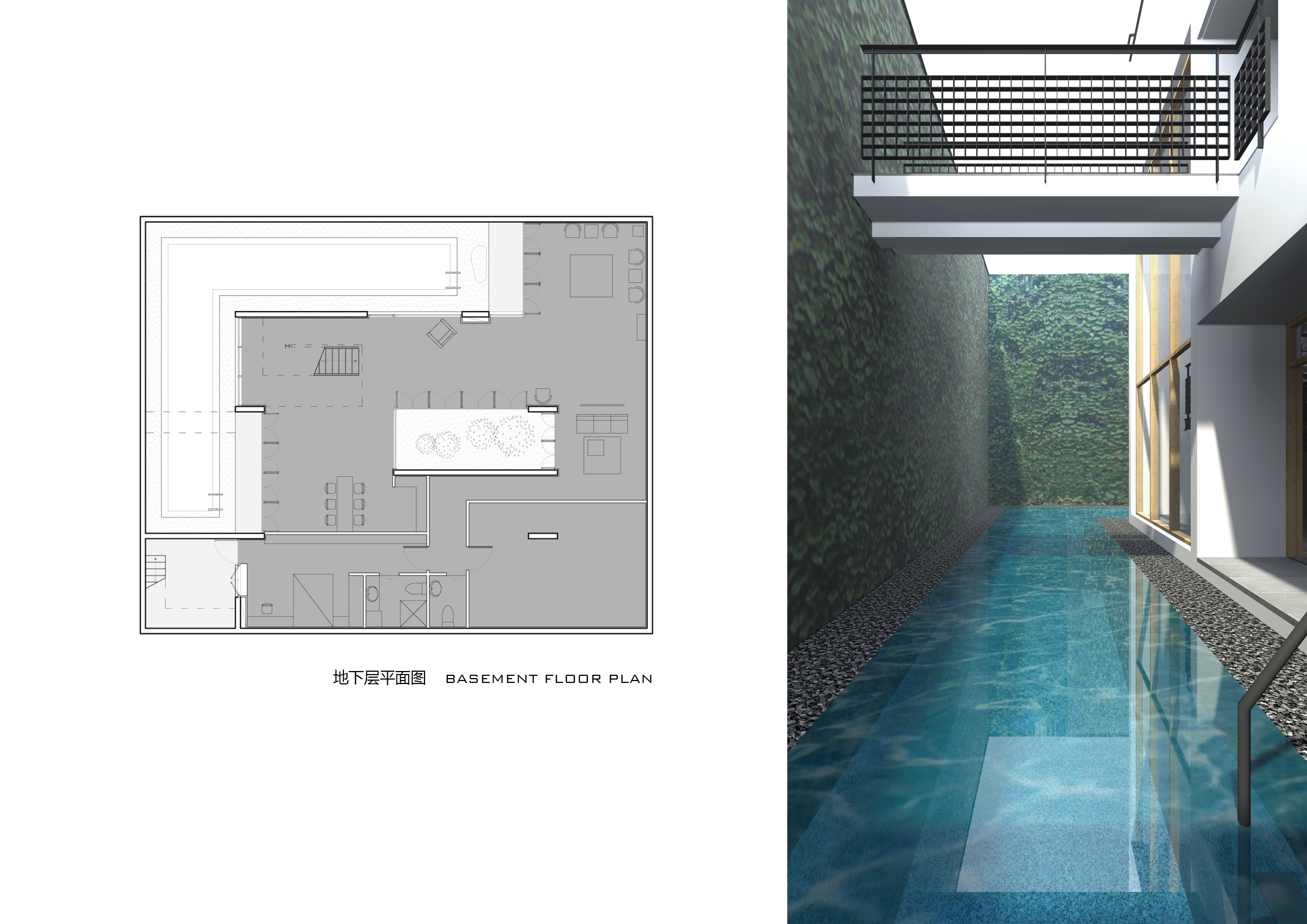 位于地下层的L型泳池 “L” shaped swimming pool on the basement floor ©柯笠建筑 Atelier LI
位于地下层的L型泳池 “L” shaped swimming pool on the basement floor ©柯笠建筑 Atelier LI
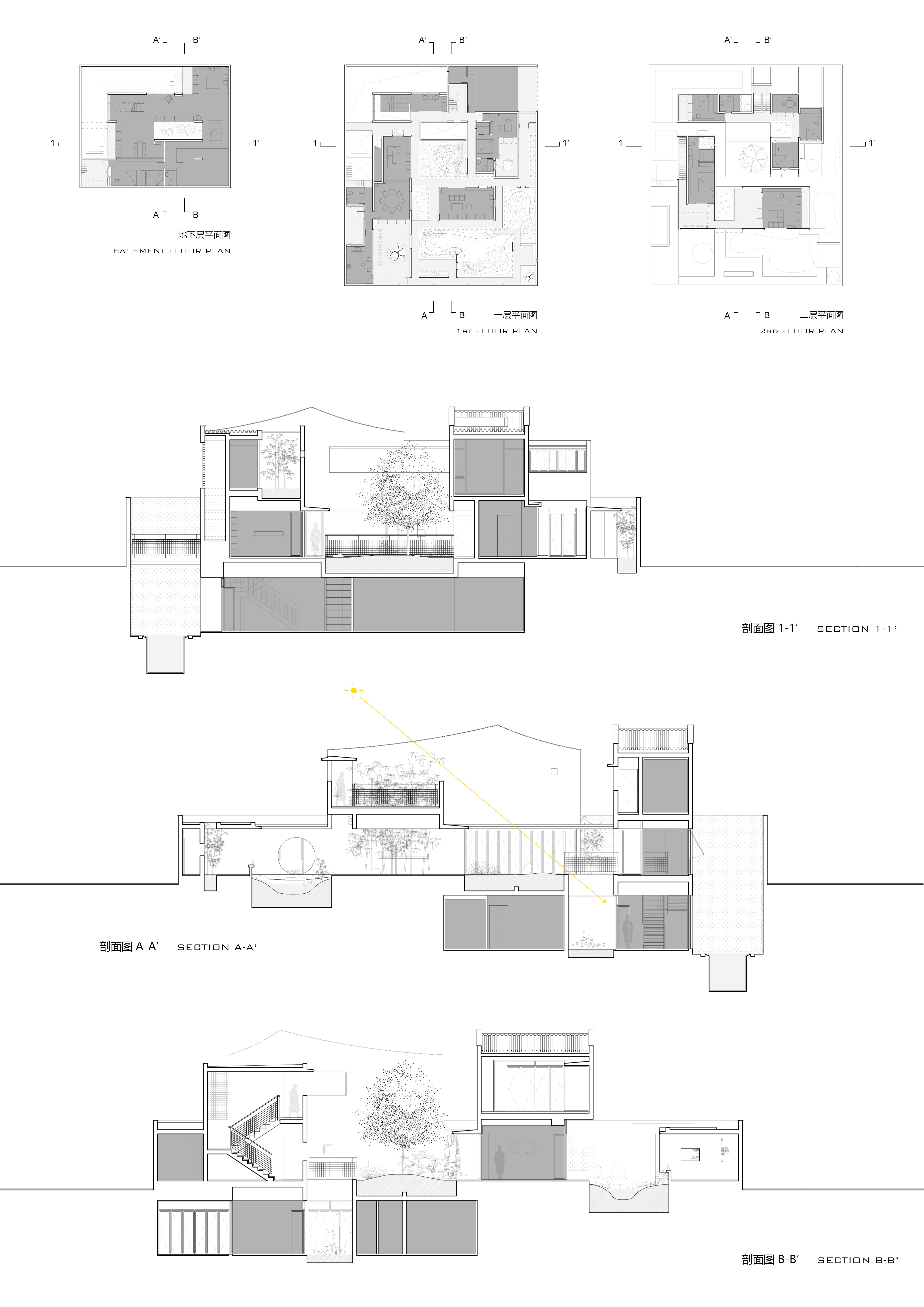
©柯笠建筑 Atelier LI
03 SK Villa
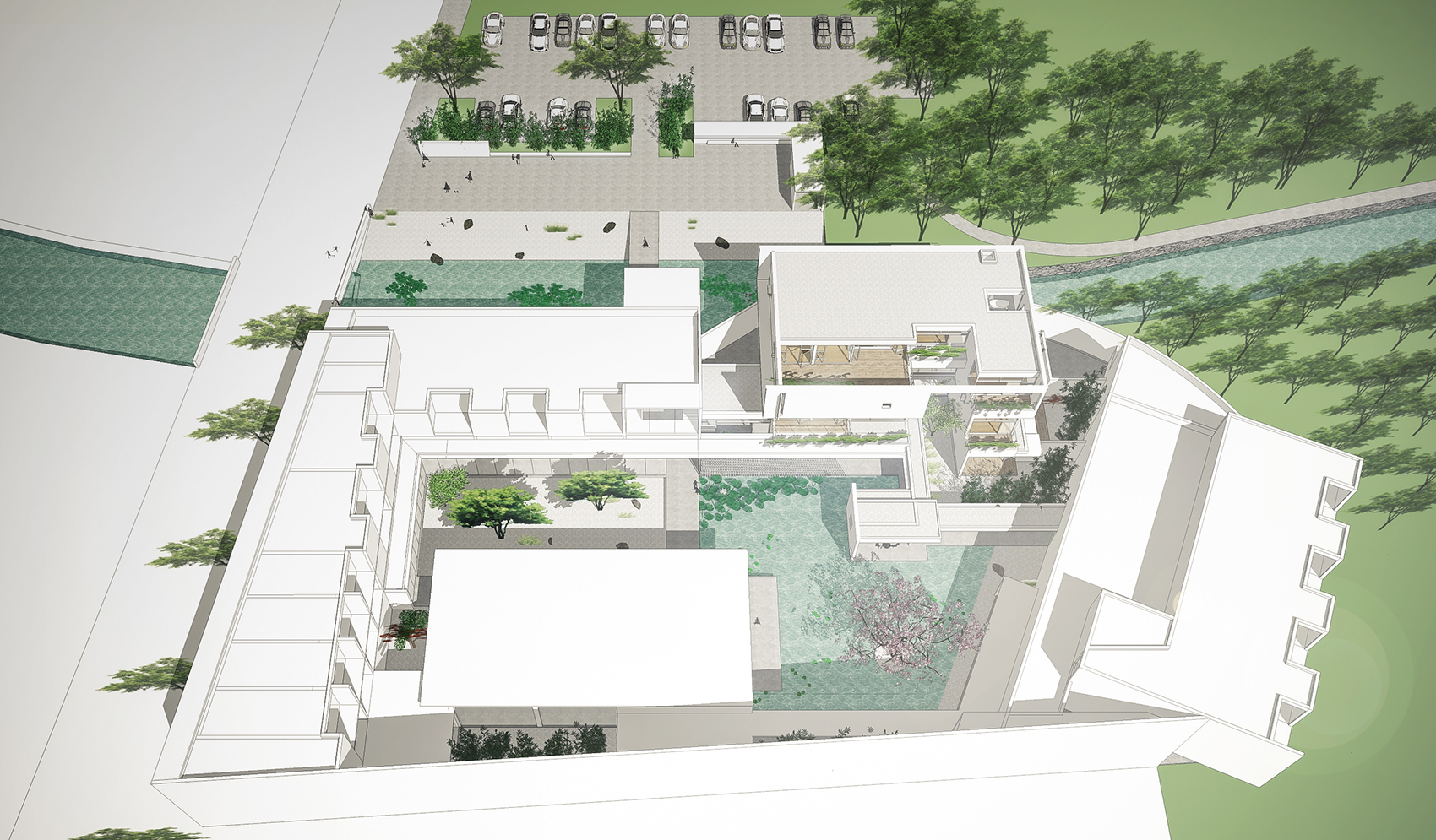
水庭园 Water garden ©柯笠建筑 Atelier LI
2019年秋天,我们受业主委托,对湖州的一个占地6亩的老旧厂房仓储区进行重新设计。业主希望建一个一亩园或者四合园墅的放大版现代园林,设置约20间客房和一栋别墅,在作为民宿酒店对外经营的同时也可度假时自住。项目的总建筑面积约4000m2,业主和我们商定,在其中尽可能多地设置公共空间,成为当地的一个文旅综合体,可以接待一部分的非住宿客人。
The autumn of 2019, we were commissioned by the client to redesign an old industrial site of 4000m2, containing some abandoned workshop buildings and warehouses. Our client hoped to build a modern garden-villa that is the enlarged version of One Mu Garden or Quadrangle Garden Villa. The new building would be used as a hotel (about 20 rooms) and meanwhile a vacation villa was planned for the client’s family. The total building area is 4000m2. We decided with the client to set up more public spaces so that the project would be a local cultural and touristic complex, which could receive a number of customers not staying.
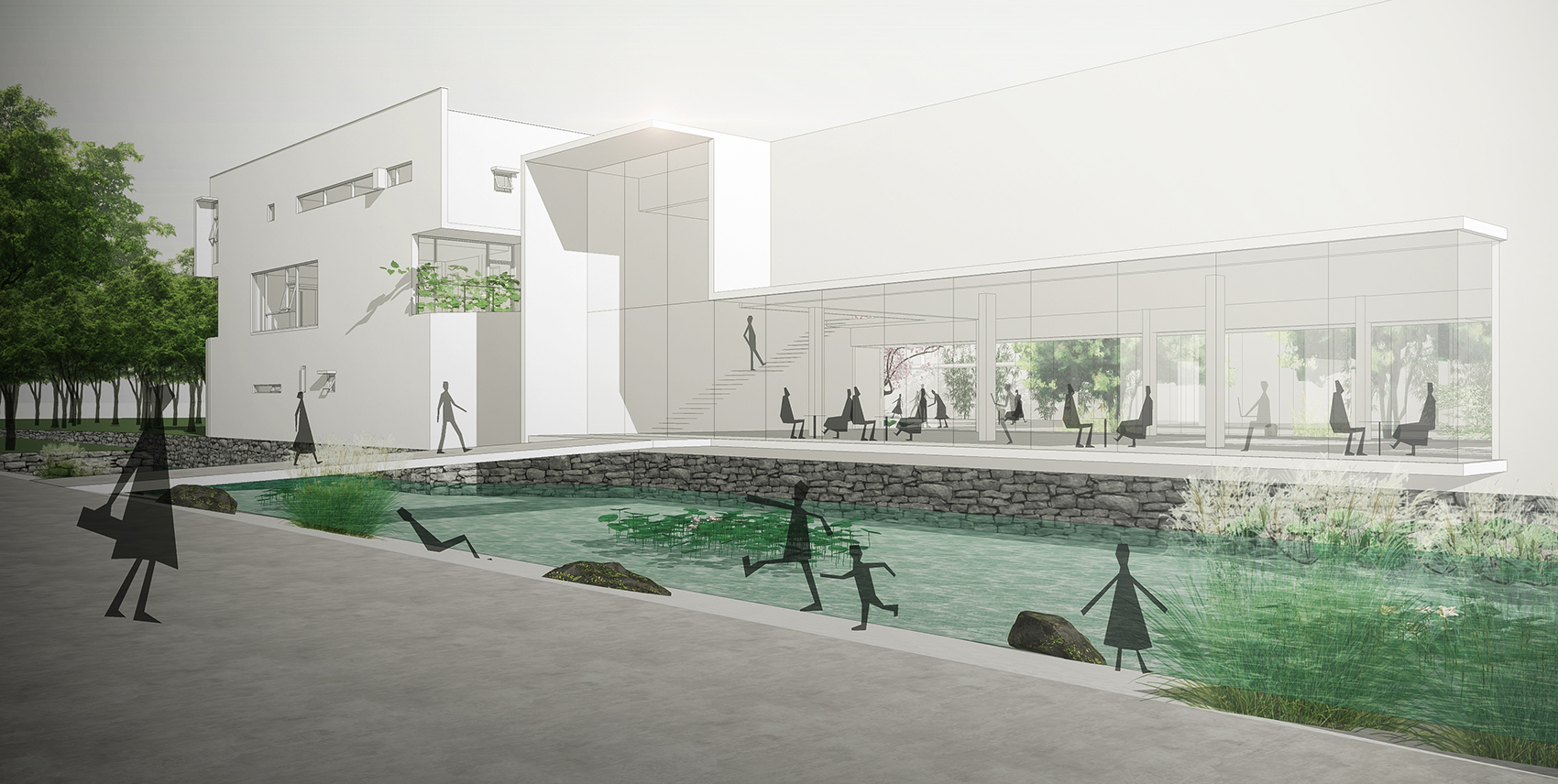
北立面 North elevation ©柯笠建筑 Atelier LI
基地北面倚河,西面是城镇道路,东面是一片果林田园,南面有其他厂区需用高墙隔开。主入口在北面,通过一座平桥跨过小河,有如沧浪亭。入口西侧的线形玻璃体量悬挑于水上,轻盈通透,人们坐在其中喝茶观景,园内与小河的景观互相渗透。西面临街是售卖文创产品的展示空间。
The site is surrounded by a river in the north, a town road in the west and an orchard-field in the east. Another industrial site in the south needs to be separated by high wall. The main entrance is situated in the north side, a bridge crossing the river, which is similar to Canglang Pavilion Garden. A linear glass volume on the west side of the entrance is overhung above the river, which is light and transparent. People siting and drinking tea therein, watch the landscape that permeates mutually between the garden and the river. Retail and displaying spaces are placed by street-side in the west.
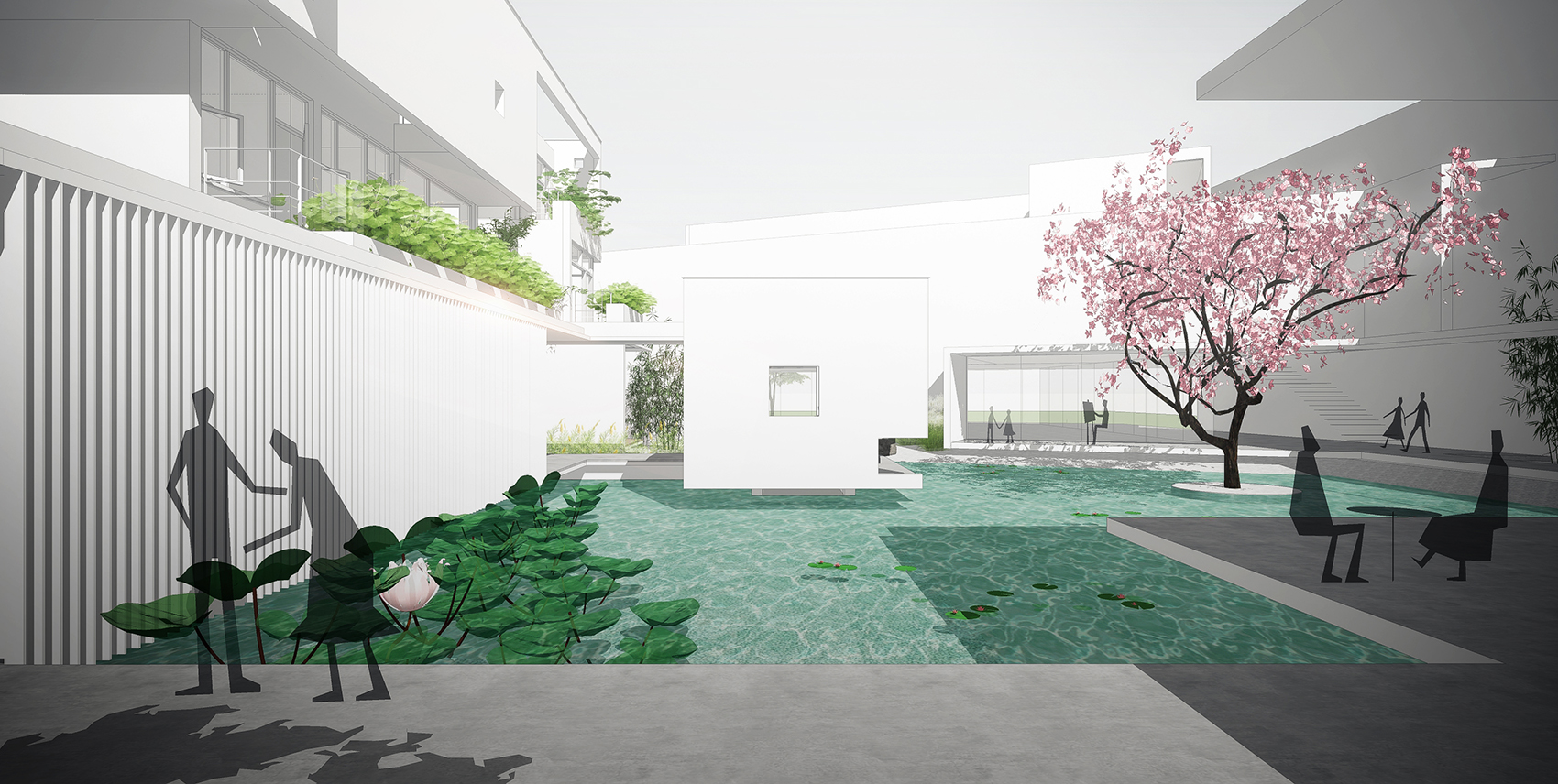
鸟瞰 Aerial view ©柯笠建筑 Atelier LI
园内分为东西两部分,西侧是砂石园,东面是水庭园。砂石园被茶室、展示空间,和南面可以举办小型宴会的餐厅围合,它们共同形成相对规整的玻璃界面,共享砂石庭院景观。位于二层和三层的客房退居其后,保留一定的私密距离。
The whole garden is divided into two parts, the east side is the water garden, and the west side is a courtyard of gravel. This courtyard is surrounded by the tearoom, the displaying space and the canteen, which is able to hold a party, forming a neat glass façade and sharing the view of the courtyard. Guestrooms on the second and the third floor retreat a little to keep a certain distance for privacy.
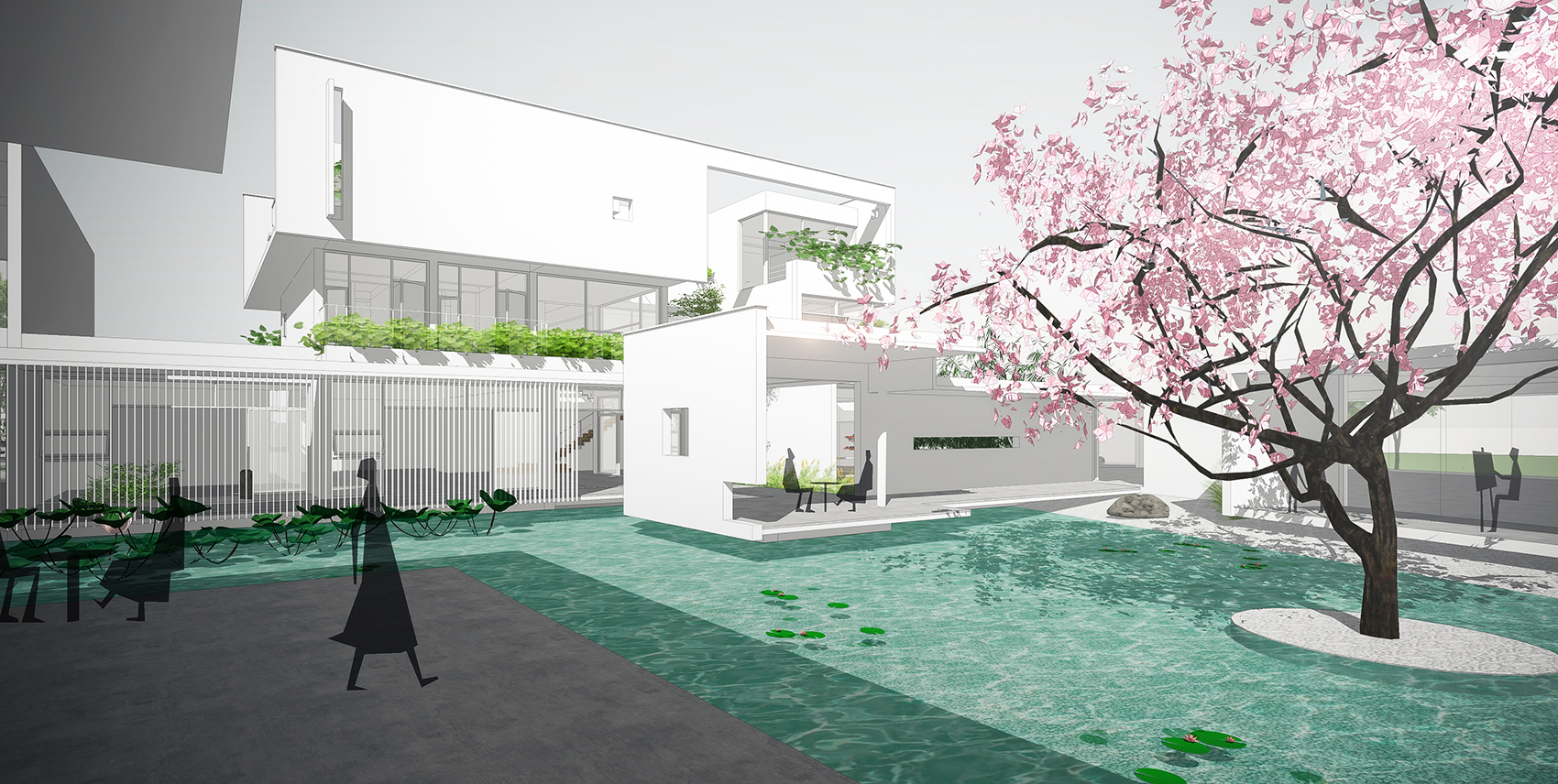 水庭园,看向别墅 Water garden, viewing the villa building ©柯笠建筑 Atelier LI
水庭园,看向别墅 Water garden, viewing the villa building ©柯笠建筑 Atelier LI
水庭园的围合界面丰富而多变,好似网师园,围绕水庭的步道檐廊,提供了游走、休憩和观望的游园体验。水庭中两道檐廊的交汇处形成一个亭子,微微漂在水上,北面的别墅被它掩在后面。东面体量的一层是小型艺术馆,也可用作手作工坊,玻璃的立面将东边田园和果林的景色借入,使整个庭园获得视觉纵深。艺术馆的二层和三层共设置8间客房,朝向东面的自然景色。
The border of the water garden is irregular providing full and varied surrounding façades, like Master of the Nets Garden. Walkways and corridors around water give experiences of promenade, repose and viewing. A pavilion is formed at the joint point of two corridors, floating lightly above the water, hiding the villa building in the north behind its back. The first floor of the east volume is a little art gallery, also used as an handcraft atelier, whose glass façade brings in the landscape of the orchard-field on the east of the site, gaining visual depth for the whole garden. Eight guestrooms are set on the second and third floor, viewing east.
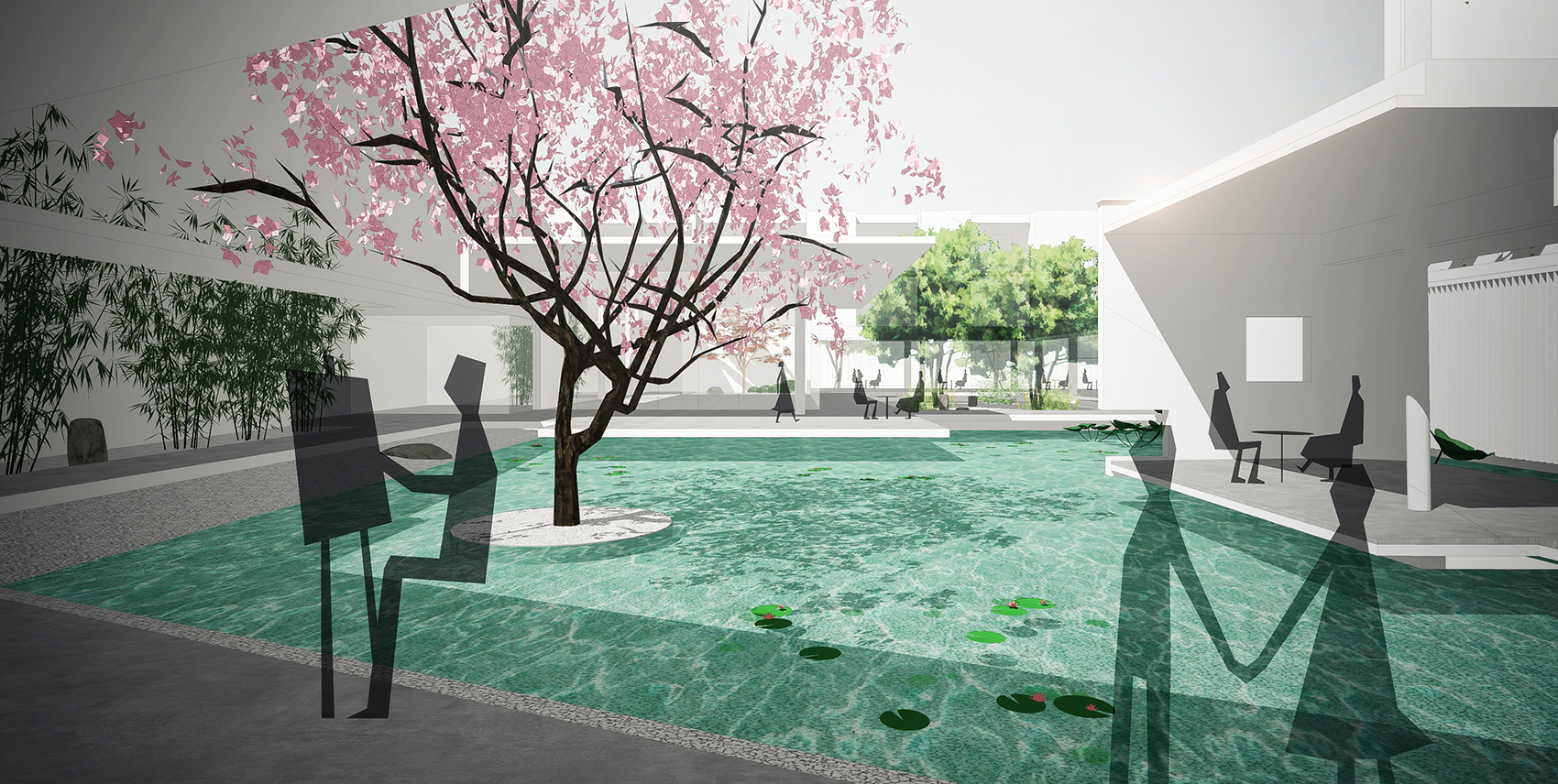
由艺术馆看水庭园 Viewing water garden from the art gallery ©柯笠建筑 Atelier LI
04 上海熊猫集团办公空楼改造设计(建造中)
Transformation of Sourper & Panda – Groupe Office Building(under construction)

由五楼大厅看六楼庭院 Viewing 6F courtyard from 5F hall ©柯笠建筑 Atelier LI
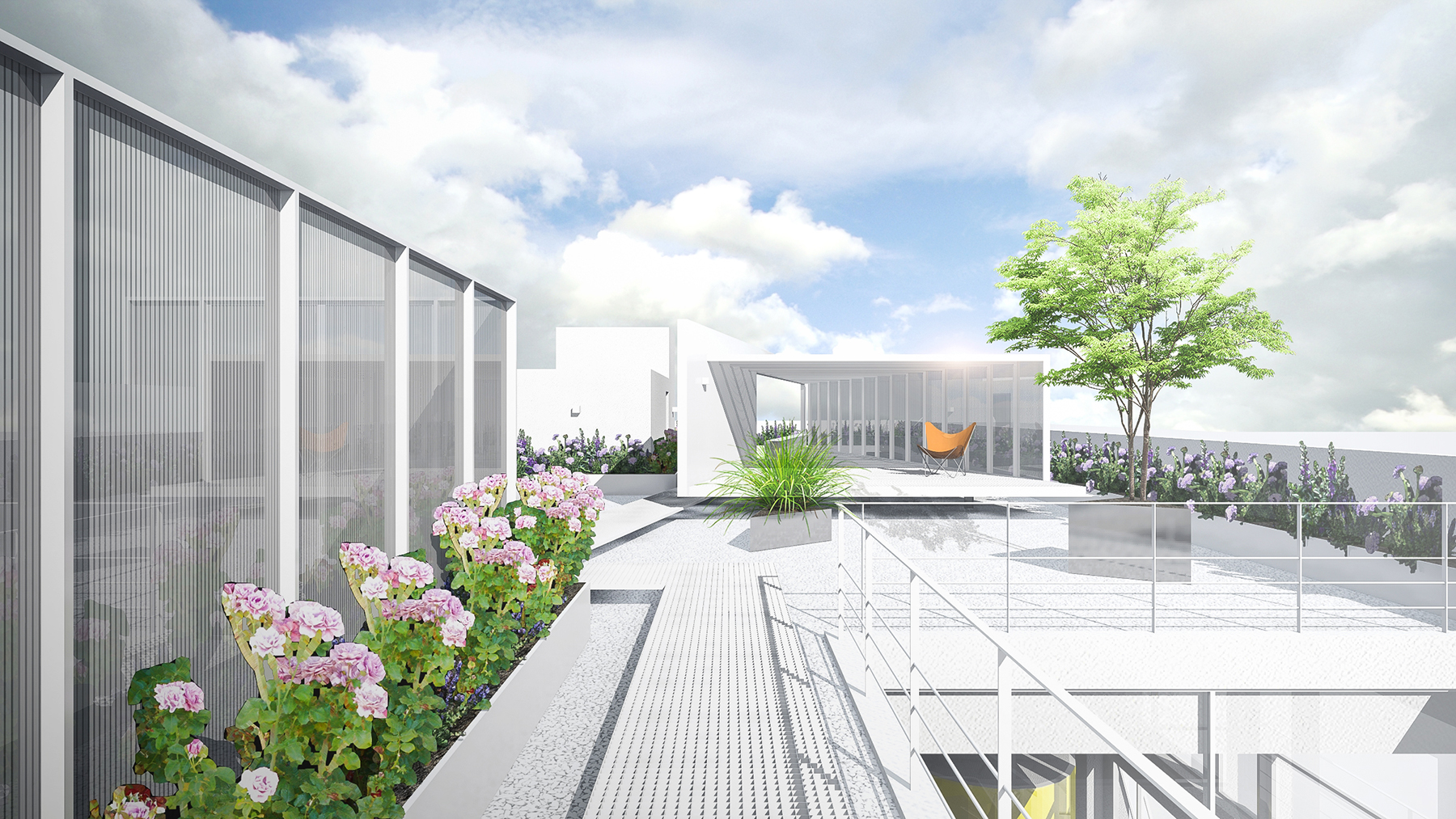 屋顶花园 Roof garden ©柯笠建筑 Atelier LI
屋顶花园 Roof garden ©柯笠建筑 Atelier LI
项目的设计范围是一座6层办公楼的5-6楼以及屋顶,位于上海青浦。如何让没有竖向联系的两个楼层以及屋顶层产生空间互动,是这次改造的设计目标。我们的策略是将一块6楼楼板和相邻的一块屋面拆除,以获得一个两层通高的大厅和位于6楼的天井庭园,由此建立了从5楼大厅-6楼庭园-屋顶花园的立体空间联系。在6楼植入的这个内庭院,在景观视线上可以为5楼大厅、6楼走廊及会议室共享。
The design scope of this project is 5F, 6F and the roof of a six-story office building in Qingpu, Shanghai. How to produce spatial interaction among two floors and the roof having no vertical connection is the design objective of this transformation project. Our strategy is to remove one piece of floor-slab of 6F and a piece of roof situated aside to obtain a double-height hall and a courtyard on 6F, which builds vertical connection for spaces from 5F, 6F to the roof floor that is designed as a garden. The courtyard inserted on 6F provides view, which can be shared by the hall on 5F, the corridor and the meeting room on 6F.
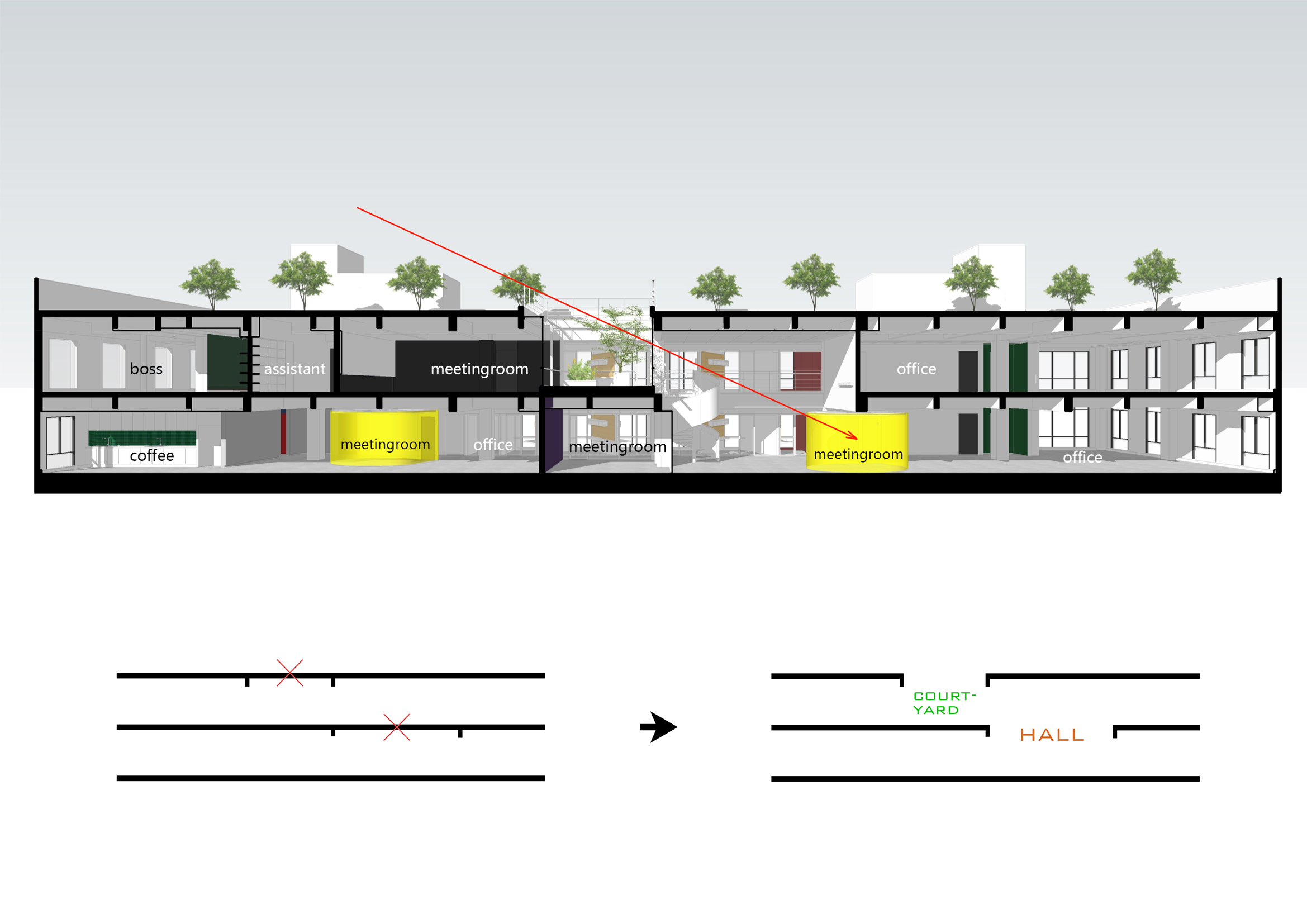 剖面分析图 Section analysis ©柯笠建筑 Atelier LI
剖面分析图 Section analysis ©柯笠建筑 Atelier LI
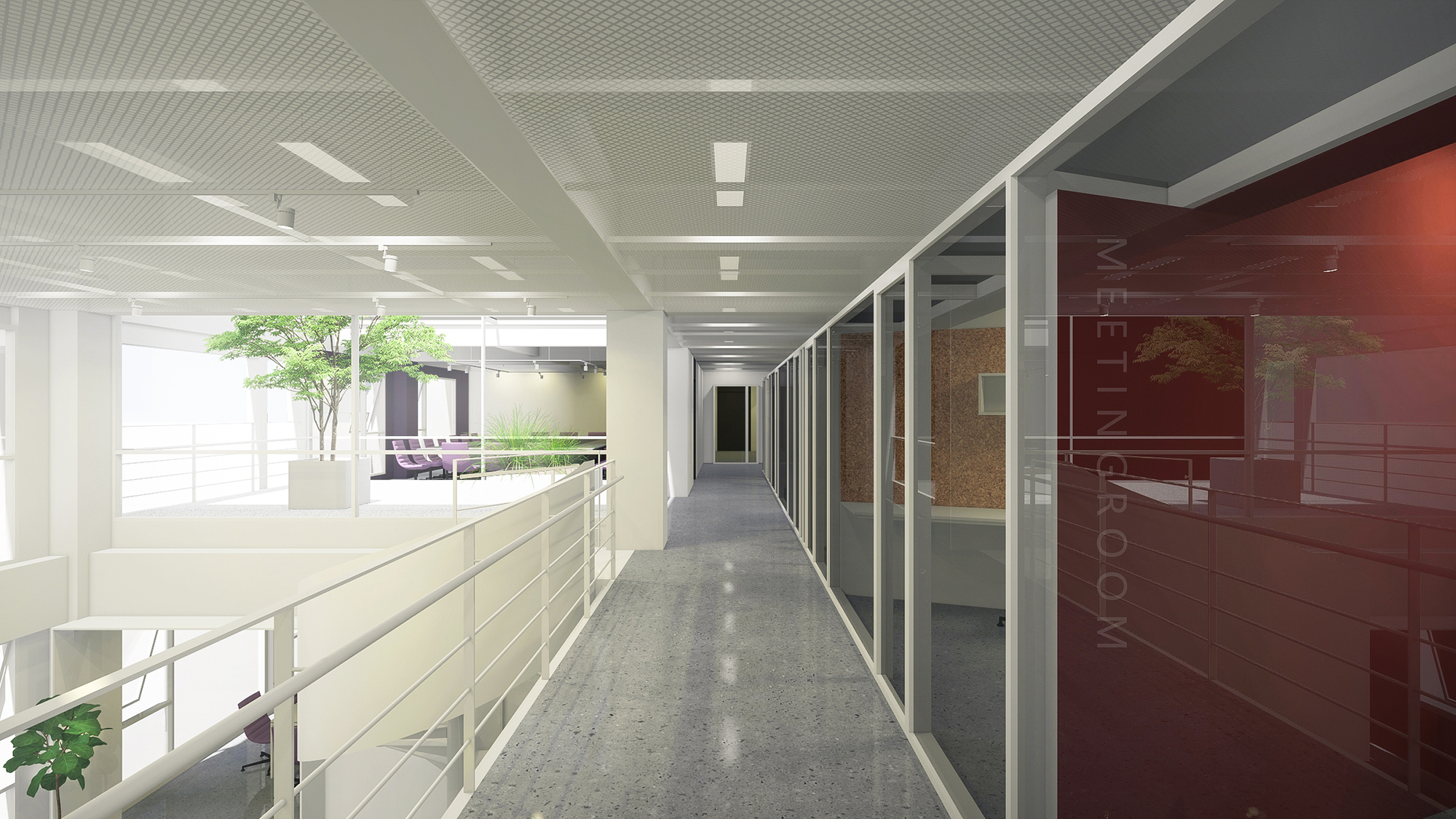 六楼走廊 6F corridor ©柯笠建筑 Atelier LI
六楼走廊 6F corridor ©柯笠建筑 Atelier LI
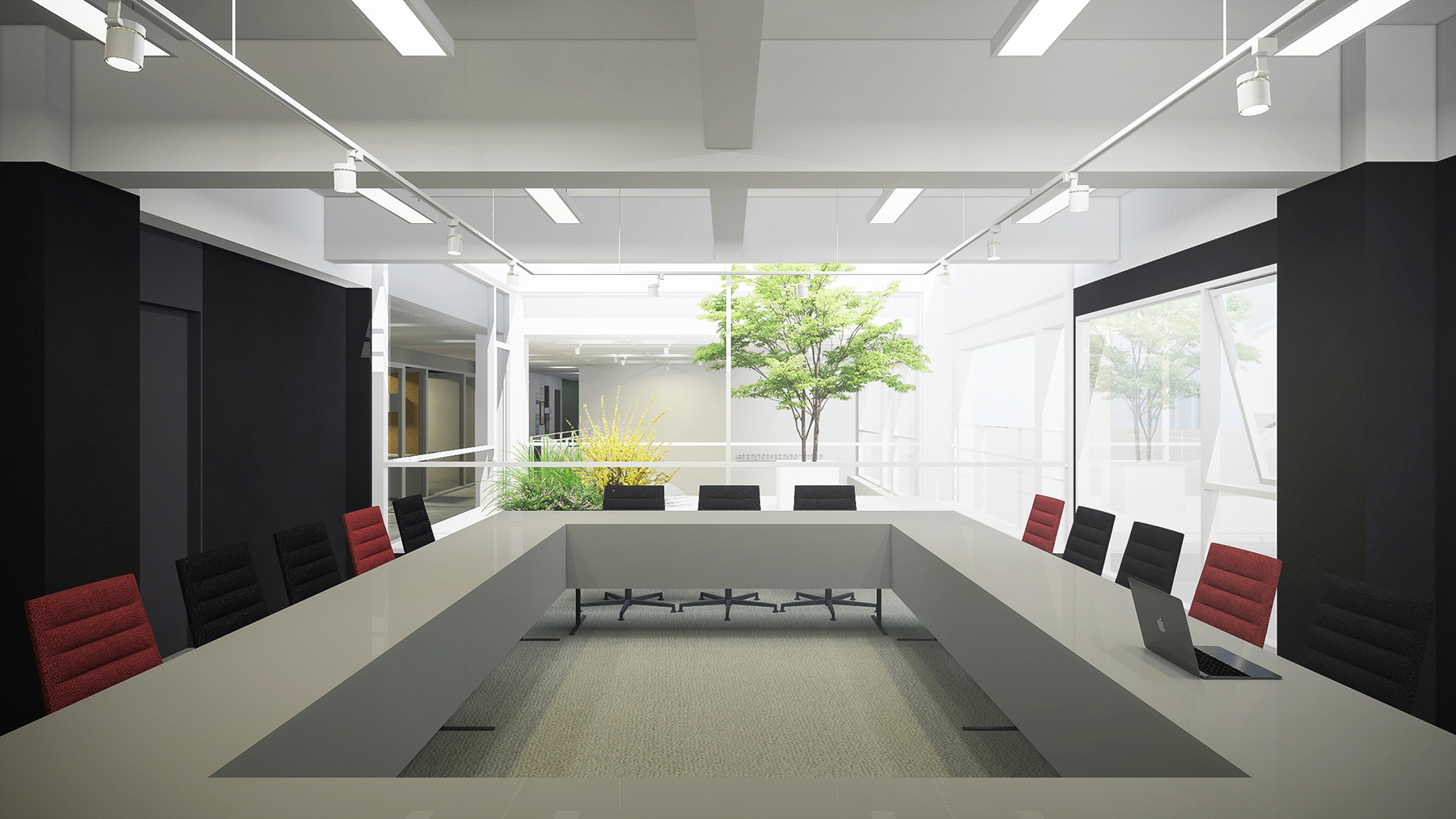 由六楼会议室看庭院 Viewing the courtyard from 6F meeting room ©柯笠建筑 Atelier LI
由六楼会议室看庭院 Viewing the courtyard from 6F meeting room ©柯笠建筑 Atelier LI
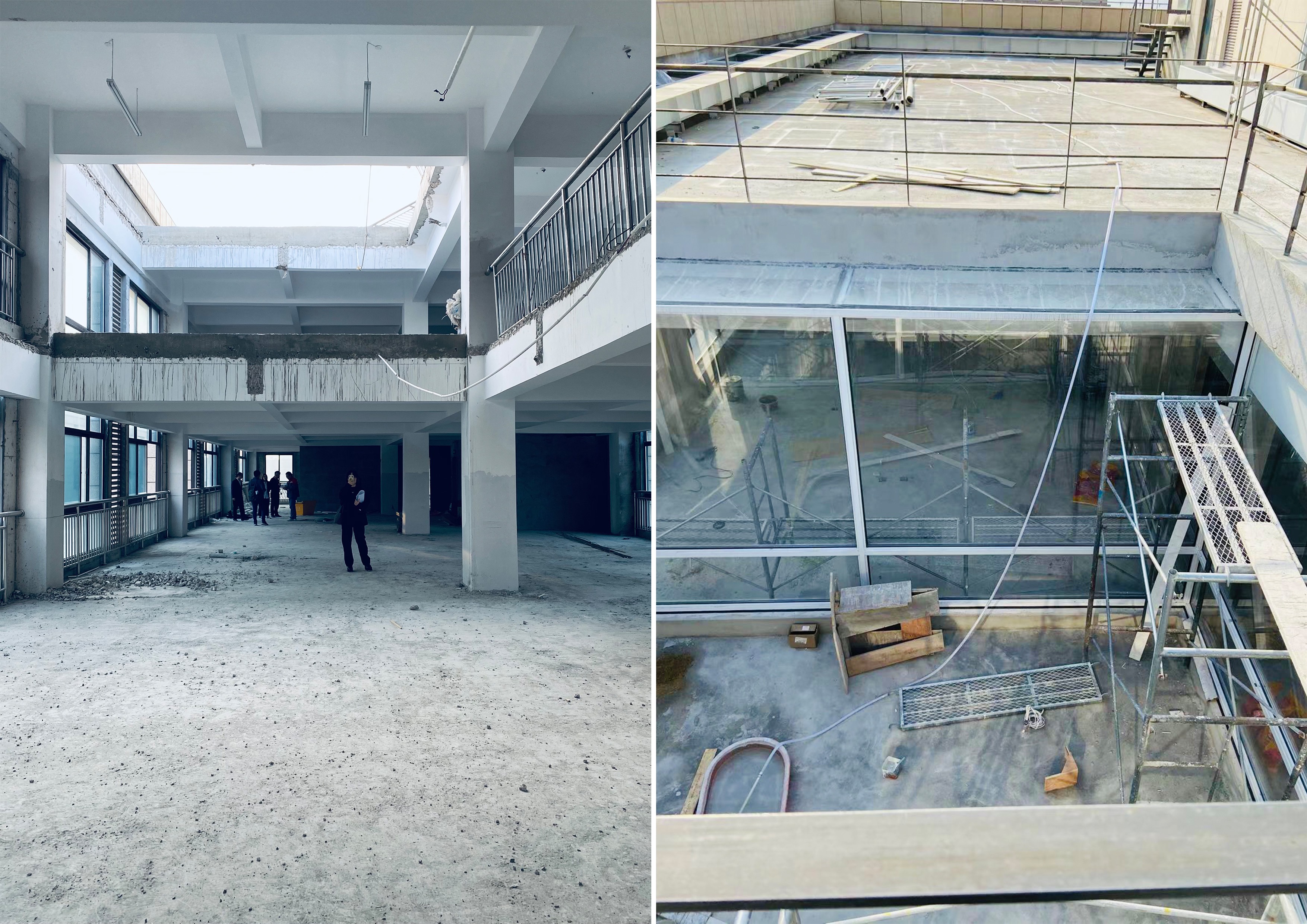 工地 Work site ©柯笠建筑 Atelier LI
工地 Work site ©柯笠建筑 Atelier LI
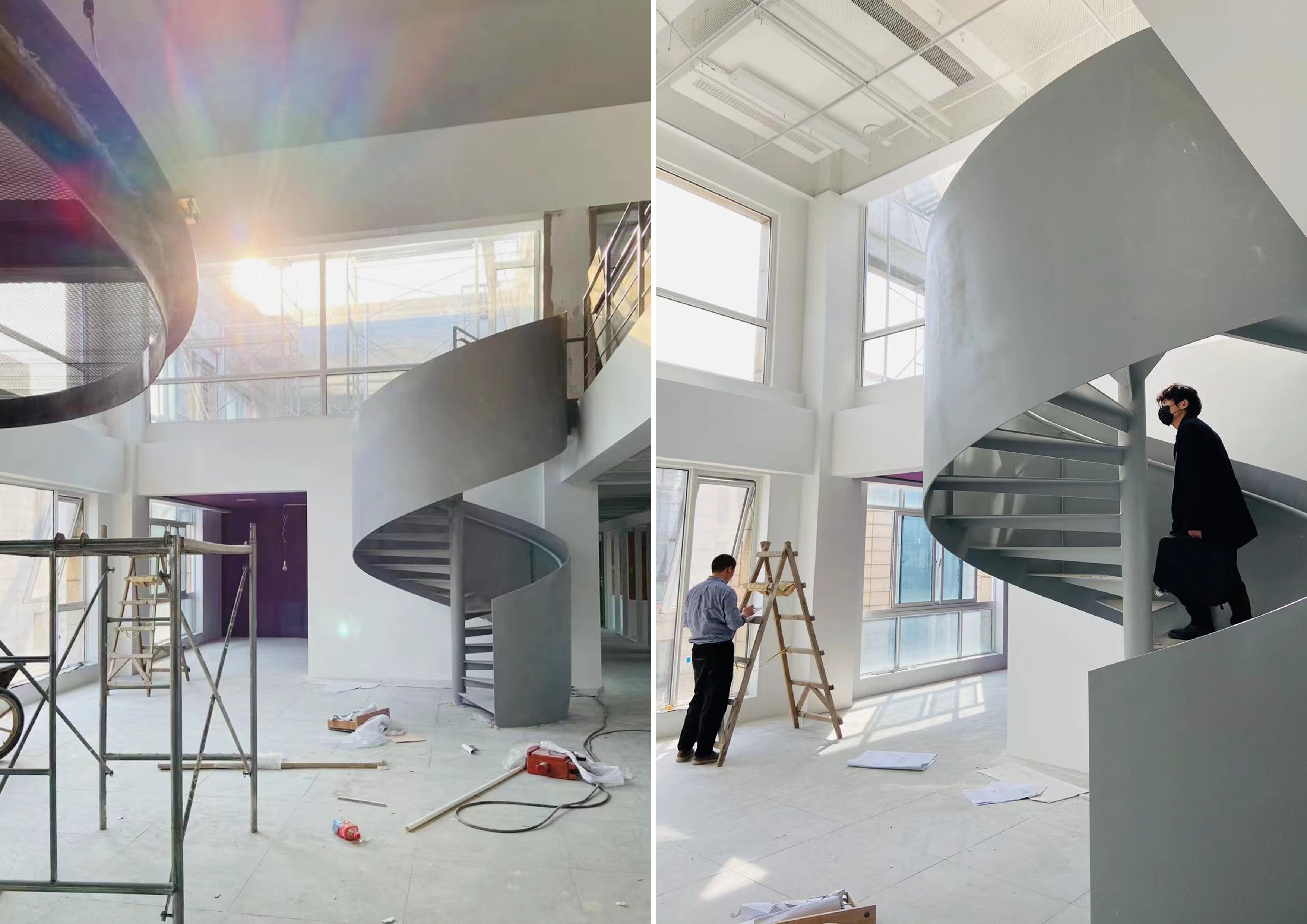 工地 Work site ©柯笠建筑 Atelier LI
工地 Work site ©柯笠建筑 Atelier LI
屋顶花园是这个项目的设计重点,我们希望在这座办公楼的屋顶呈现一片超日常的庭园,在满足企业高层休憩使用的同时,给整个办公园区带来美学上的惊喜。
The roof garden is the key point of this project. We hope to realize a garden that is beyond daily life on the roof of this building. It will bring aesthetic surprise for the whole enterprise campus when meeting the needs for relaxing of the company executives.
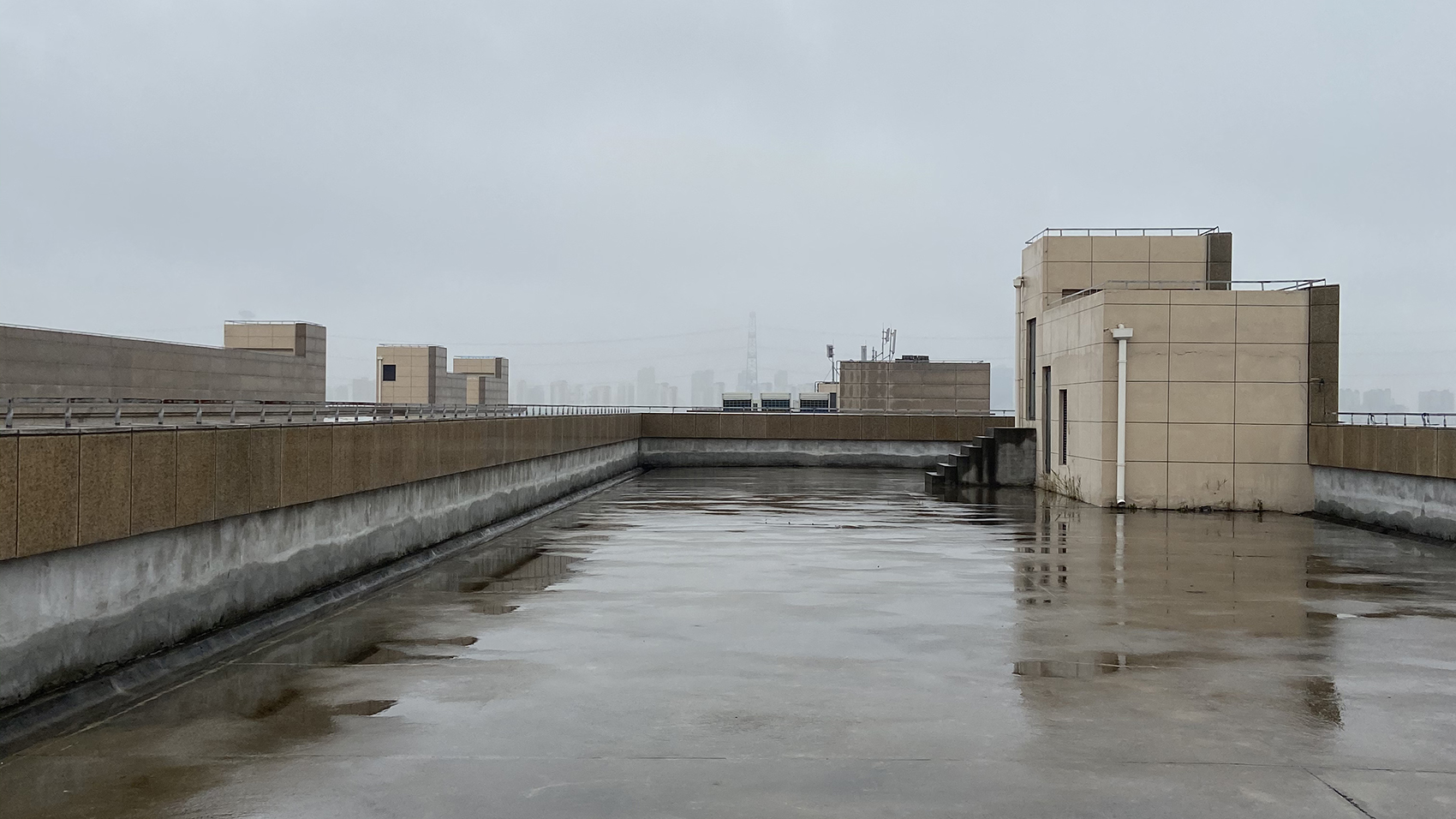 屋顶场地原貌,Original site of the roof ©柯笠建筑 Atelier LI
屋顶场地原貌,Original site of the roof ©柯笠建筑 Atelier LI
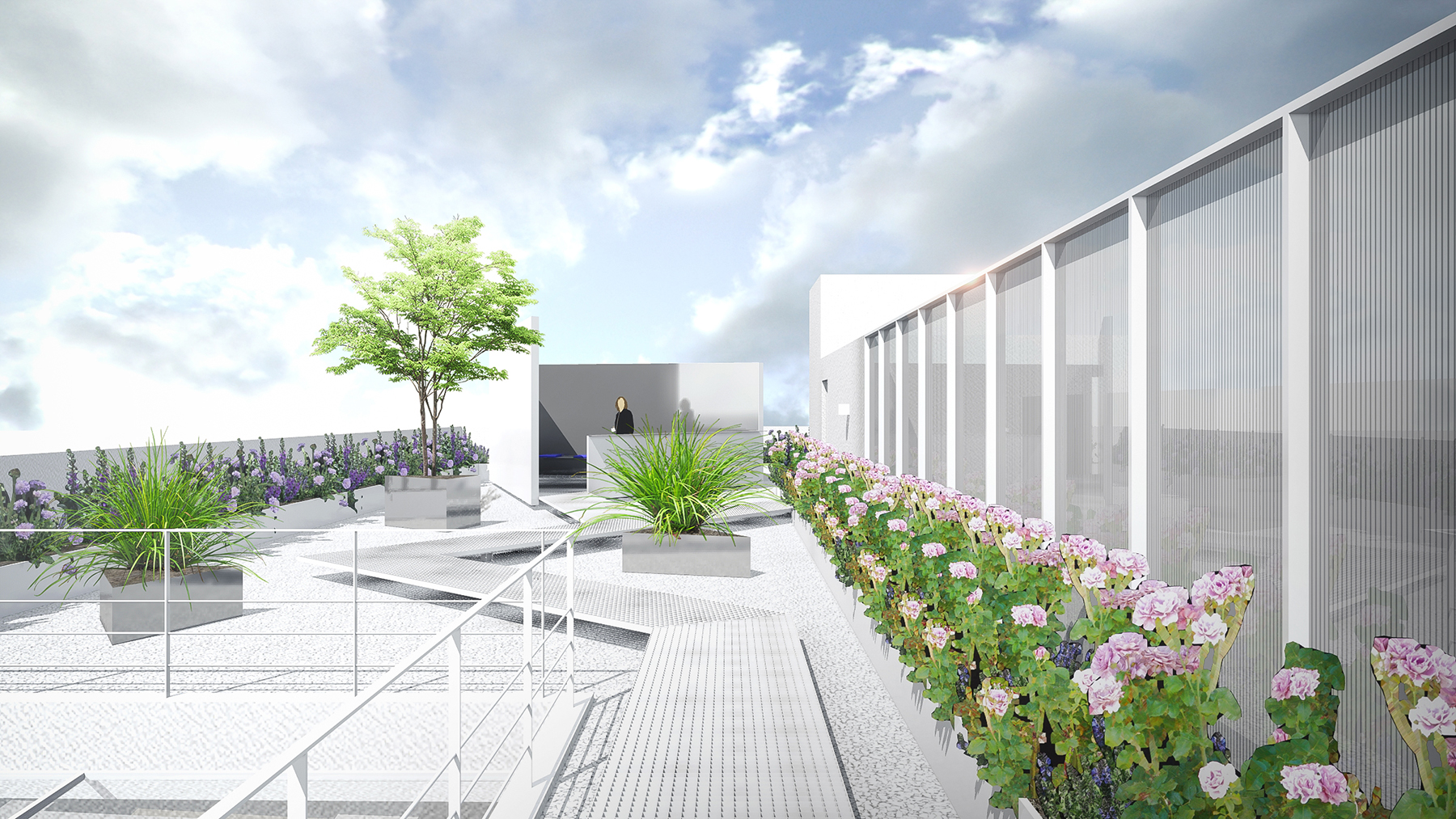 屋顶花园, 看向亭子M Roof garden, viewing Pavilion M ©柯笠建筑 Atelier LI
屋顶花园, 看向亭子M Roof garden, viewing Pavilion M ©柯笠建筑 Atelier LI
整个屋顶区域被庭院的洞口分为两部分。我们在其中各设置了一个三角形的钢结构亭子,和联系它们的折线形步道一起轻轻漂浮在白色的砂石地面上。
The roof floor is divided into two parts by the courtyard. We place in each part a triangular pavilion made of steel structure, floating lightly above the gravel floor with the walkway in the shape of polyline, which connects the two pavilions.
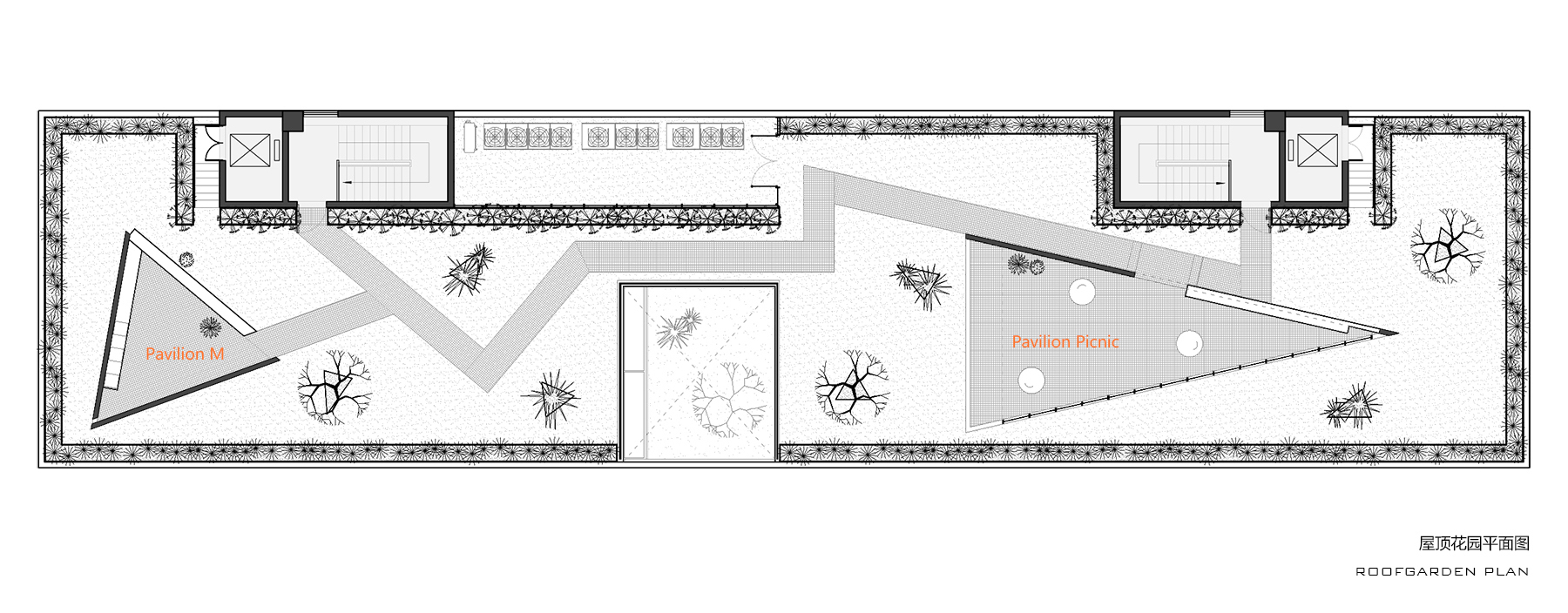
屋顶花园平面图 Roof garden plan ©柯笠建筑 Atelier LI
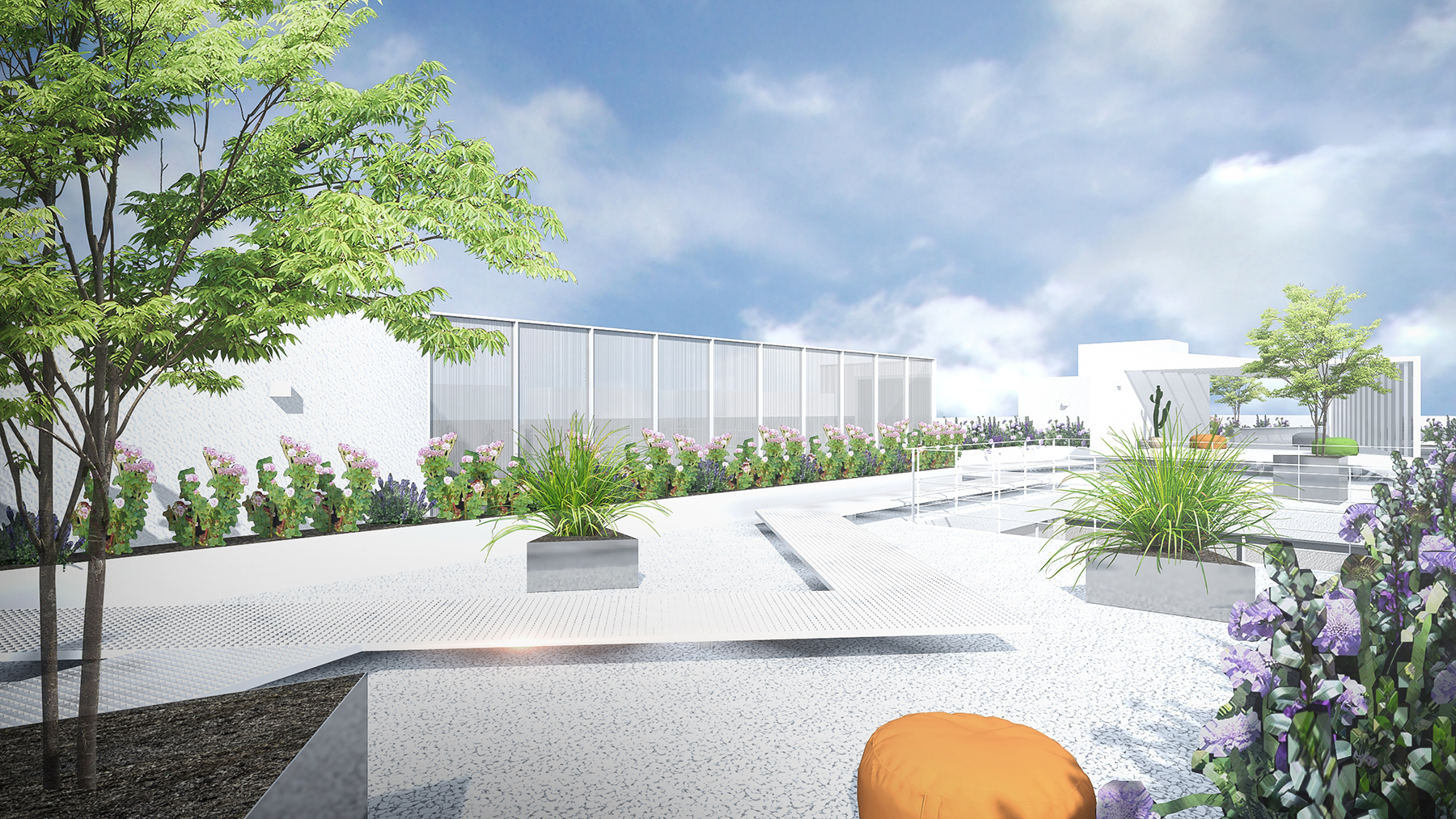 屋顶花园 Roof garden ©柯笠建筑 Atelier LI
屋顶花园 Roof garden ©柯笠建筑 Atelier LI
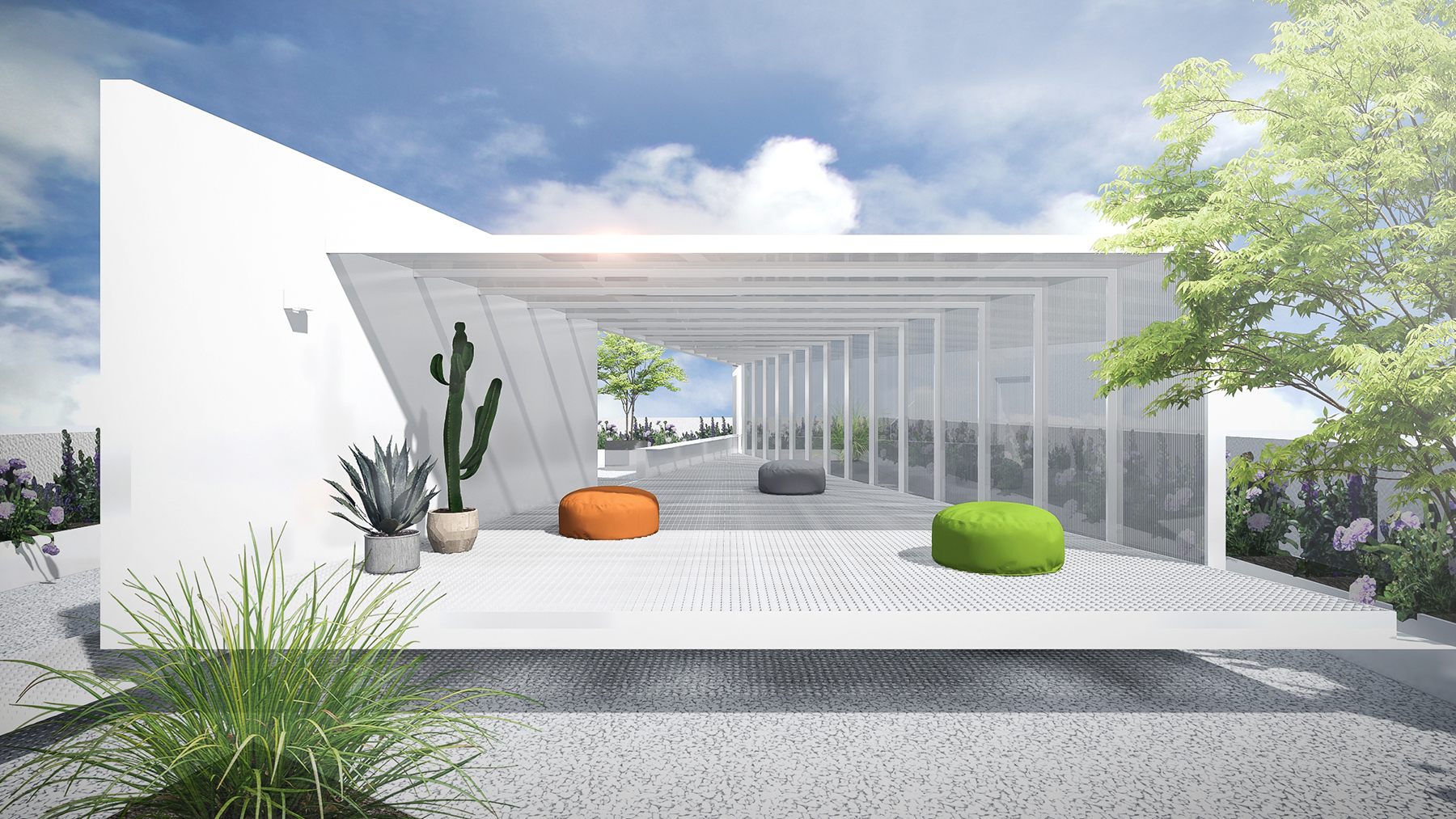
亭子Picnic Pavilion Picnic ©柯笠建筑 Atelier LI
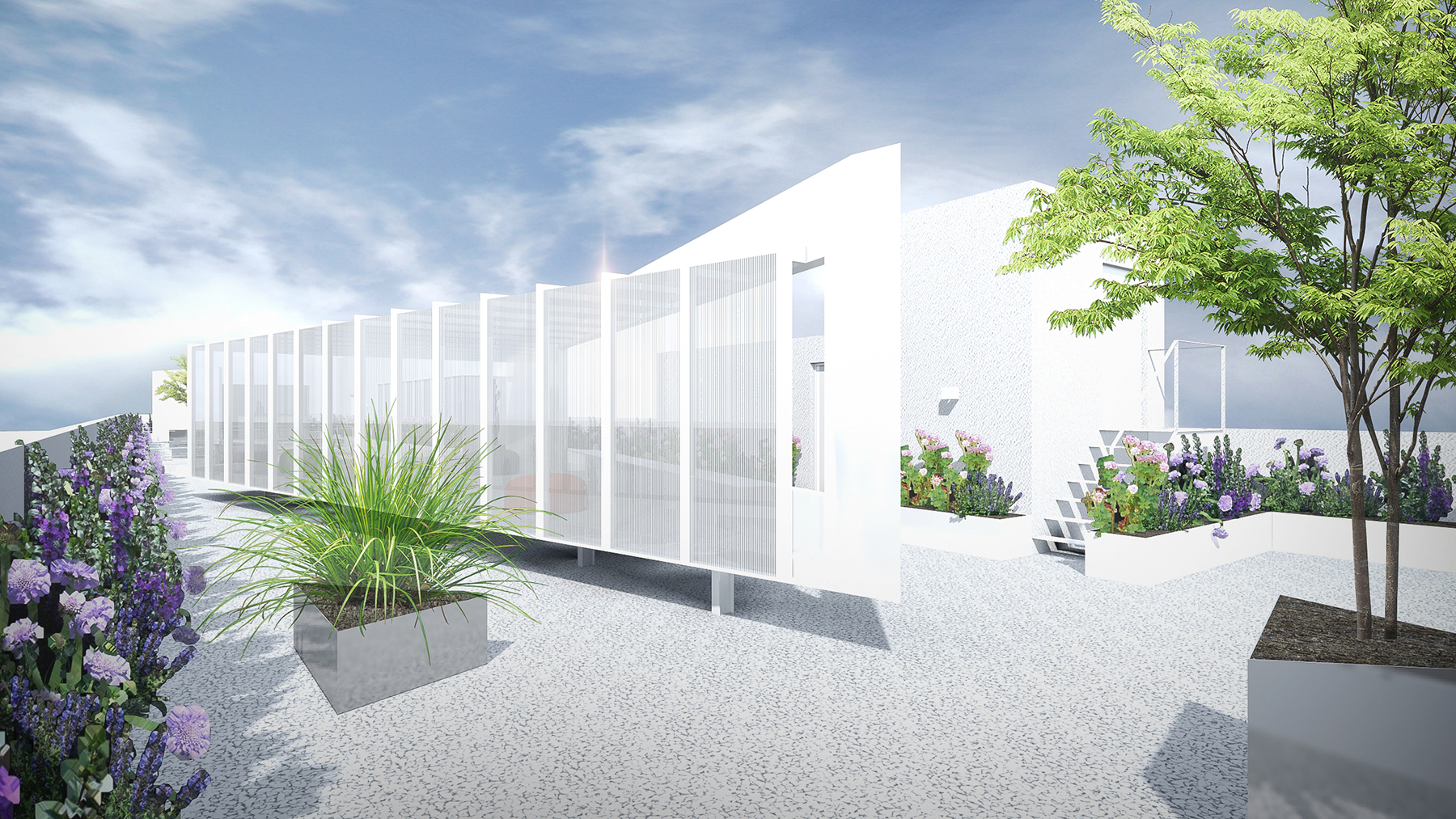
亭子Picnic Pavilion Picnic ©柯笠建筑 Atelier LI
屋顶的一圈设置白色种植箱,植物带将花园意境与外部隔开;中间区域点缀一些三角形的不锈钢种植箱,种植小树和灌木,在花园中浮游。
White planting boxes are placed on the periphery of the roof, plantation belts separate the artistic conception of the garden from the outside. Triangular stainless-steel planting boxes are interspersed in the middle, with little trees and shrubs planted, floating in the garden.
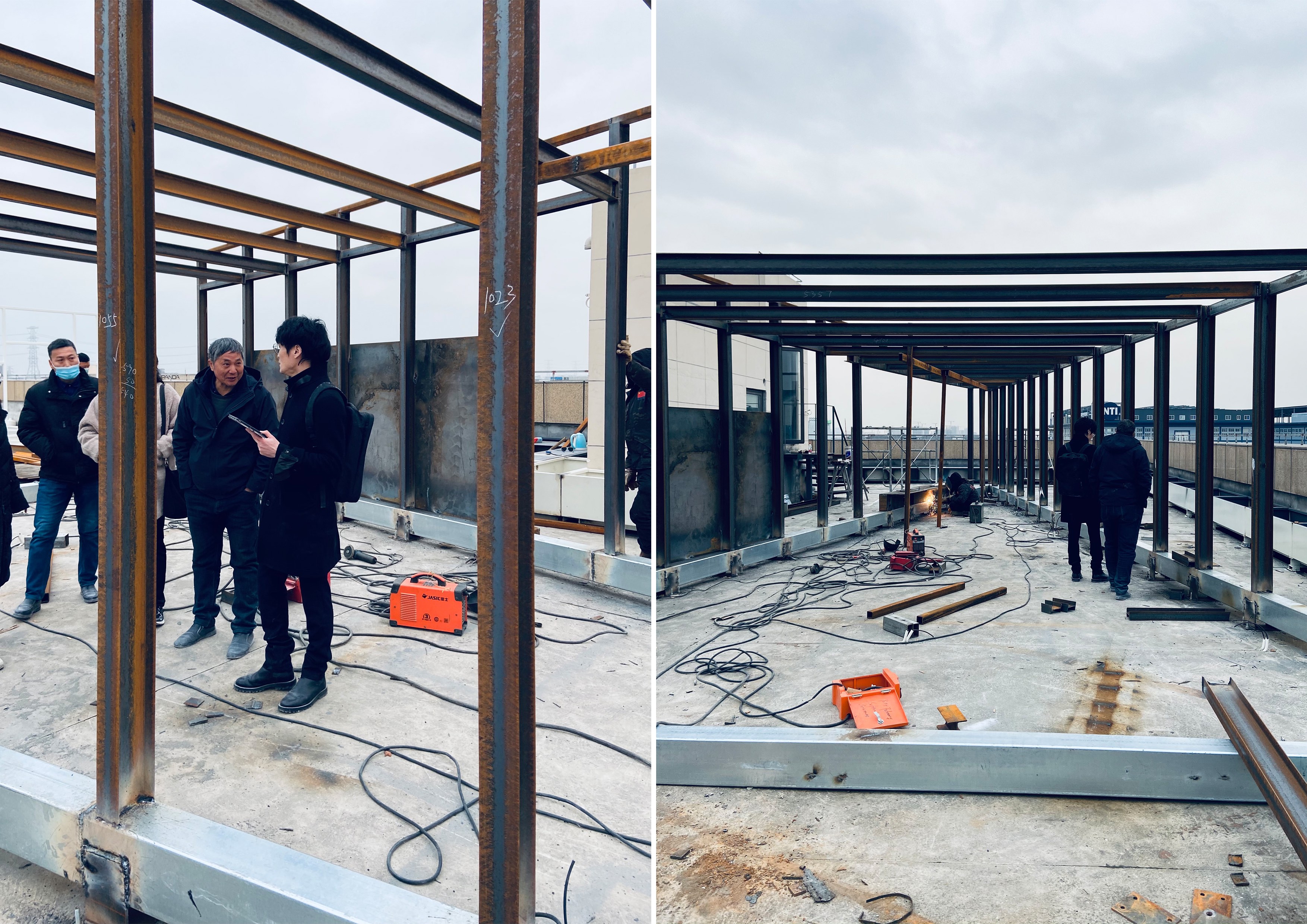 亭子Picnic Pavilion Picnic ©柯笠建筑 Atelier LI
亭子Picnic Pavilion Picnic ©柯笠建筑 Atelier LI
 工地 Work site ©柯笠建筑 Atelier LI
工地 Work site ©柯笠建筑 Atelier LI
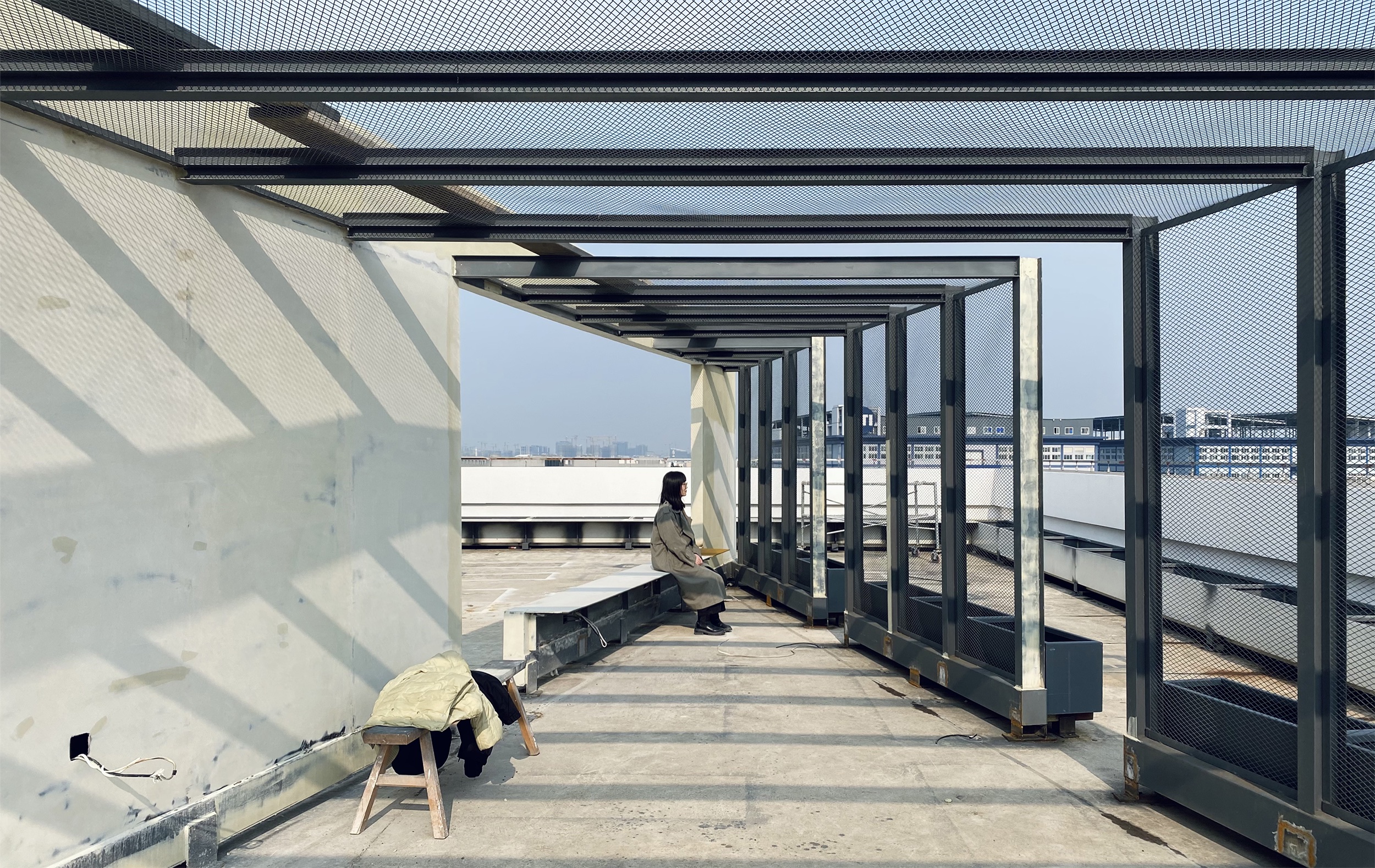 工地 Work site ©柯笠建筑 Atelier LI
工地 Work site ©柯笠建筑 Atelier LI
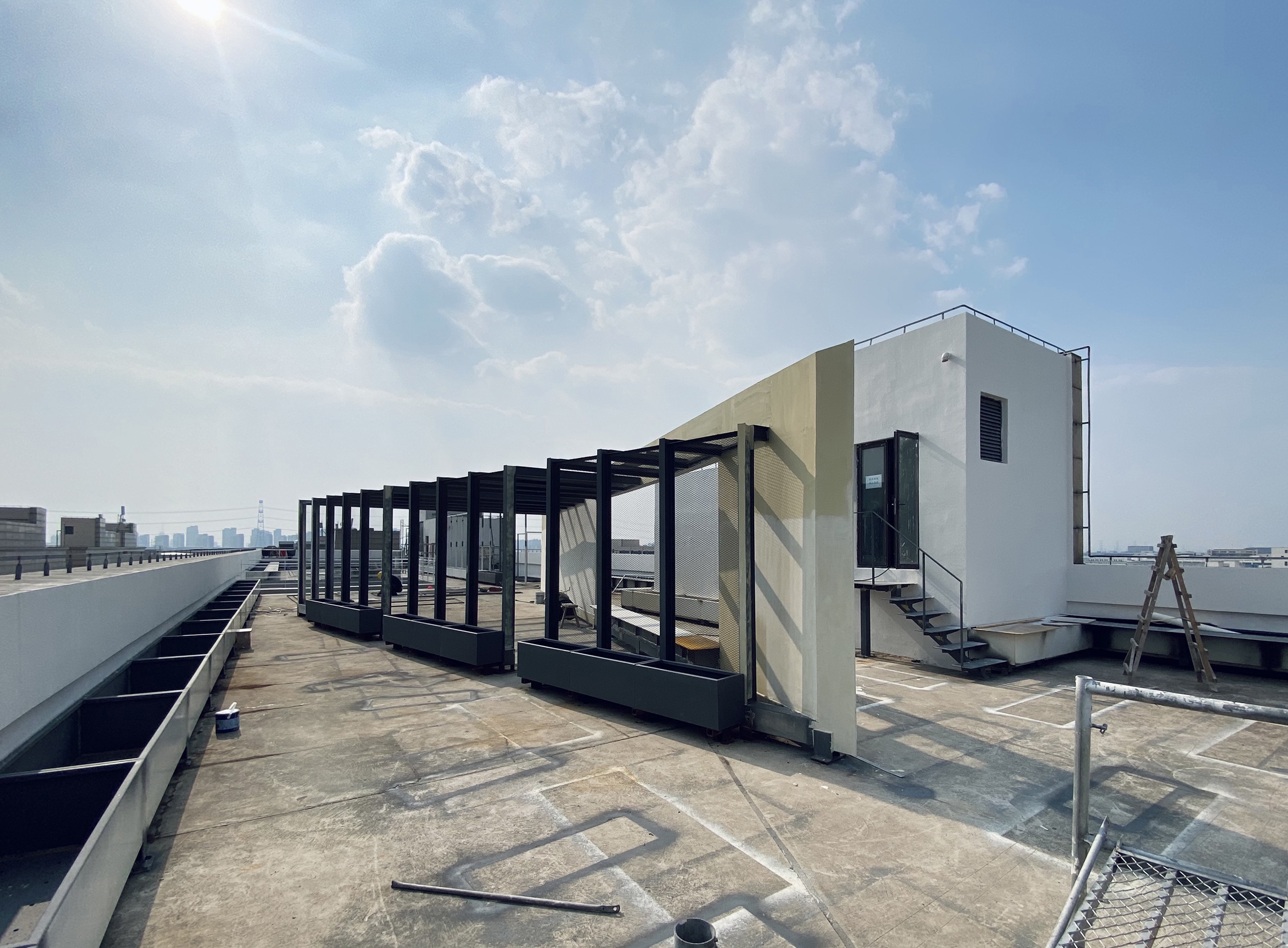
工地 Work site ©柯笠建筑 Atelier LI
05 上海浦东田园住宅(建成)
Pudong Villa(Built)
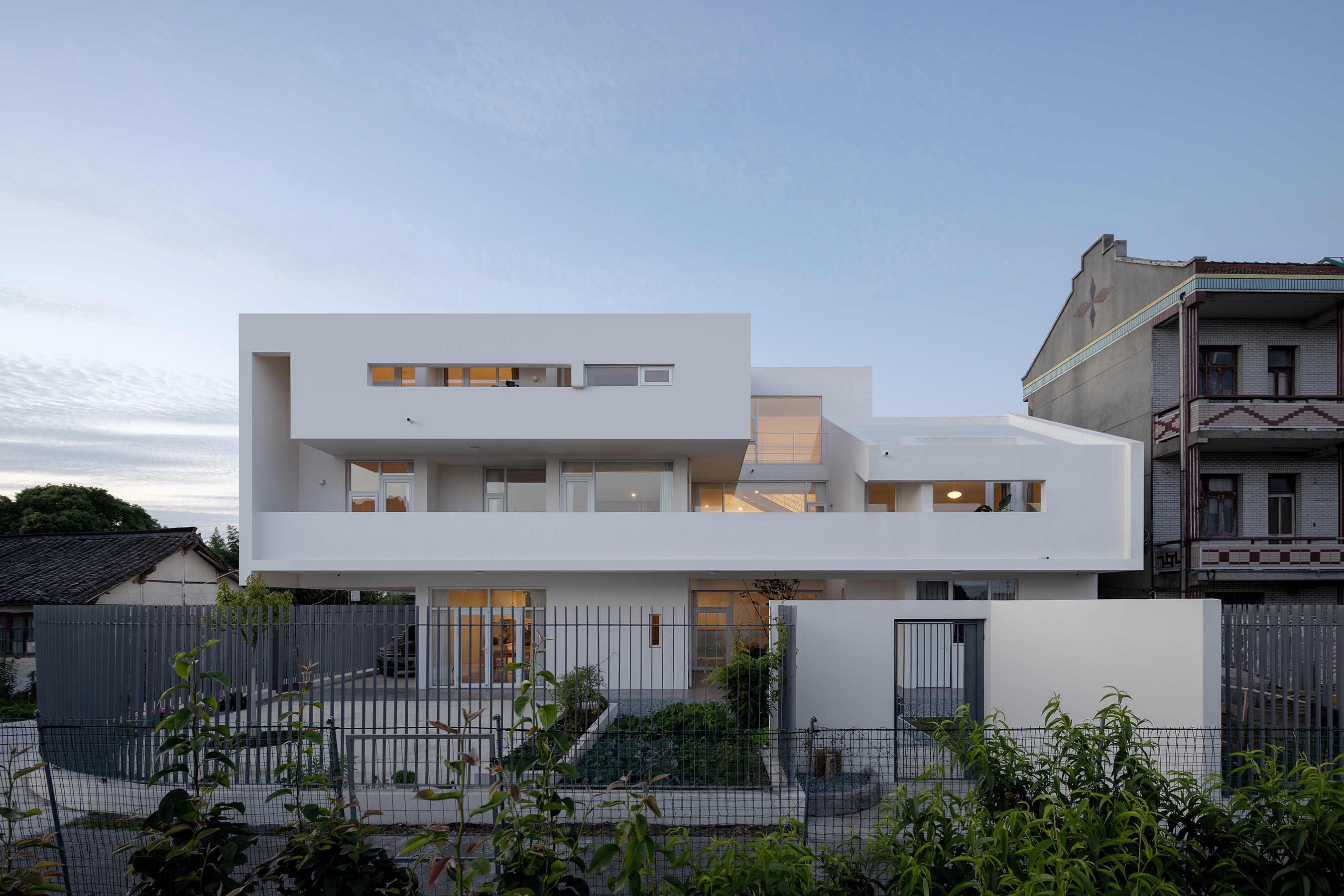
南立面,South Elevation © WM STUDIO
作为一个上海郊外的自建别墅项目,我们希望在有限的条件下,在设计中营造园林的意境。通过在不同的楼层植入内庭院和天井,点缀绿植,建筑的室内外空间产生了微妙的渗透和相融。强烈而明确的白色建筑体块成为了容器,包含着几个内庭院和天井,并以其为内核形成稳定的内在氛围,从而产生所追求的意境。
As a project of self-built villa in the suburb of Shanghai, we hope to create garden-atmosphere under limited conditions. Delicate permeation and integration are formed between interior and exterior spaces of the villa by inserting courtyards in different floors and interspersing greenery. The white architectural volume that is intense and explicit becomes a container, containing several courtyards, forming stable inner atmosphere with courtyards as core, so that the artistic conception we pursue is realized.
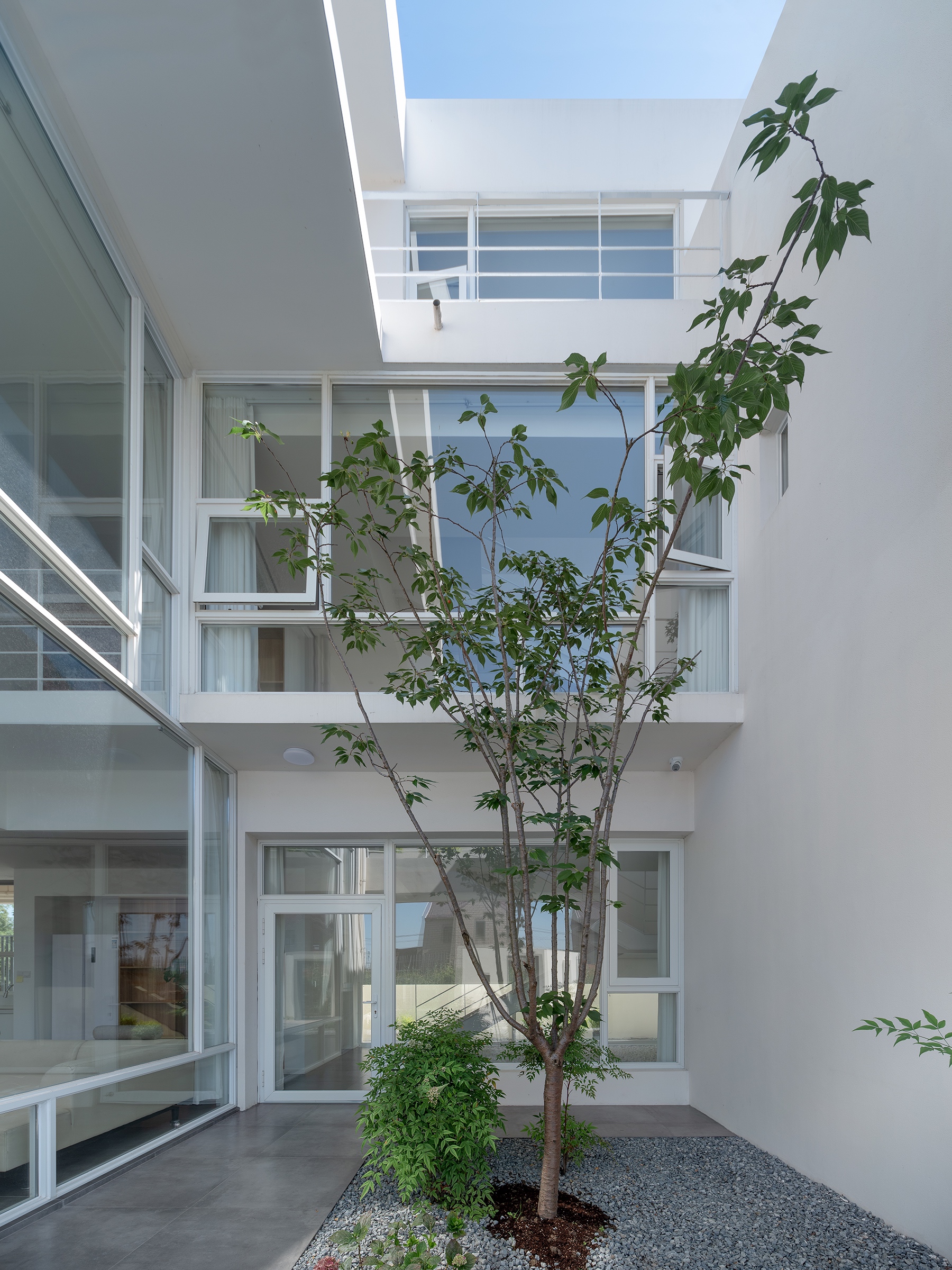 主庭院,Main Courtyard © WM STUDIO
主庭院,Main Courtyard © WM STUDIO

二层连廊,2nd Floor Passage © WM STUDIO
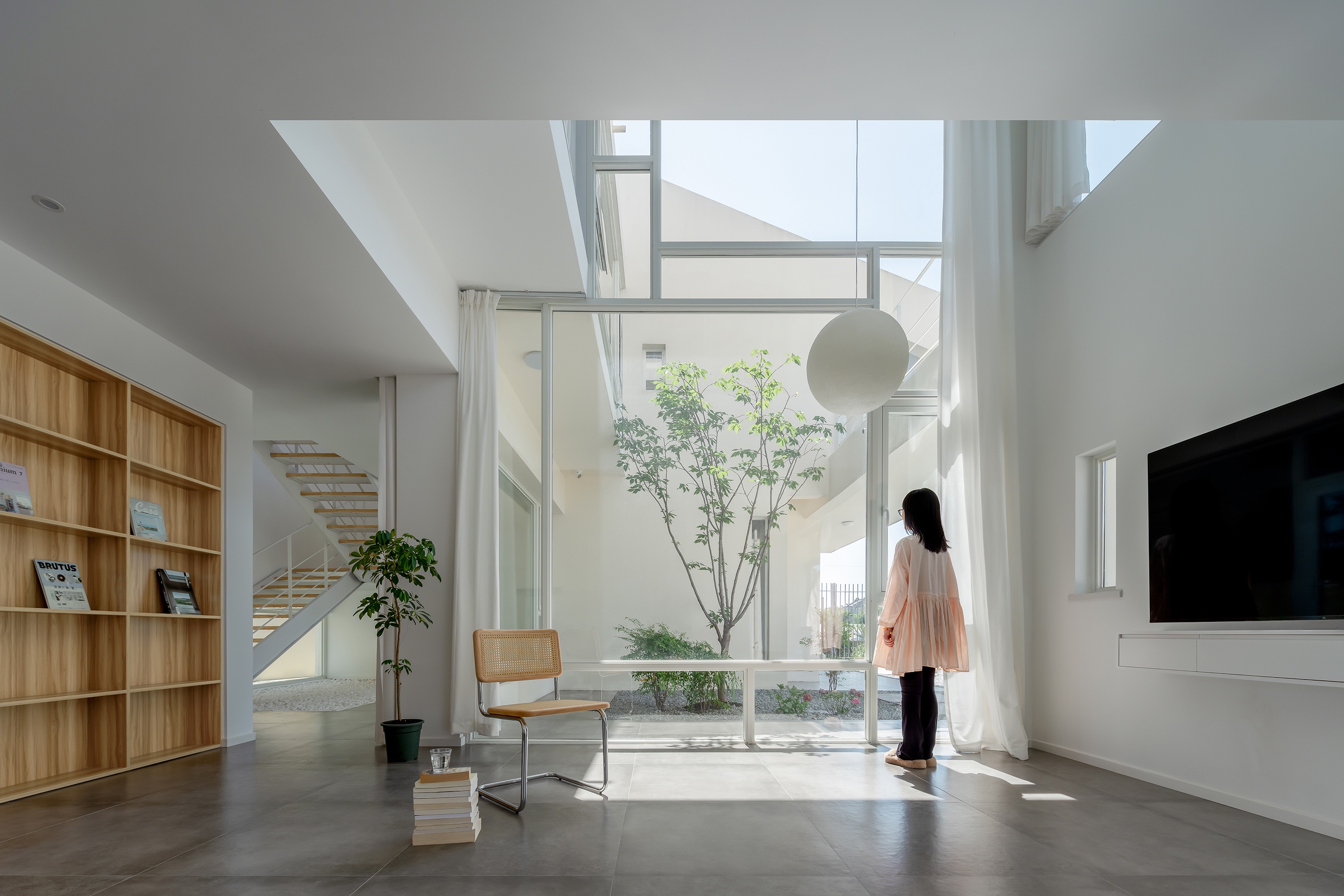
一层起居室,1st Floor Living Room © WM STUDIO
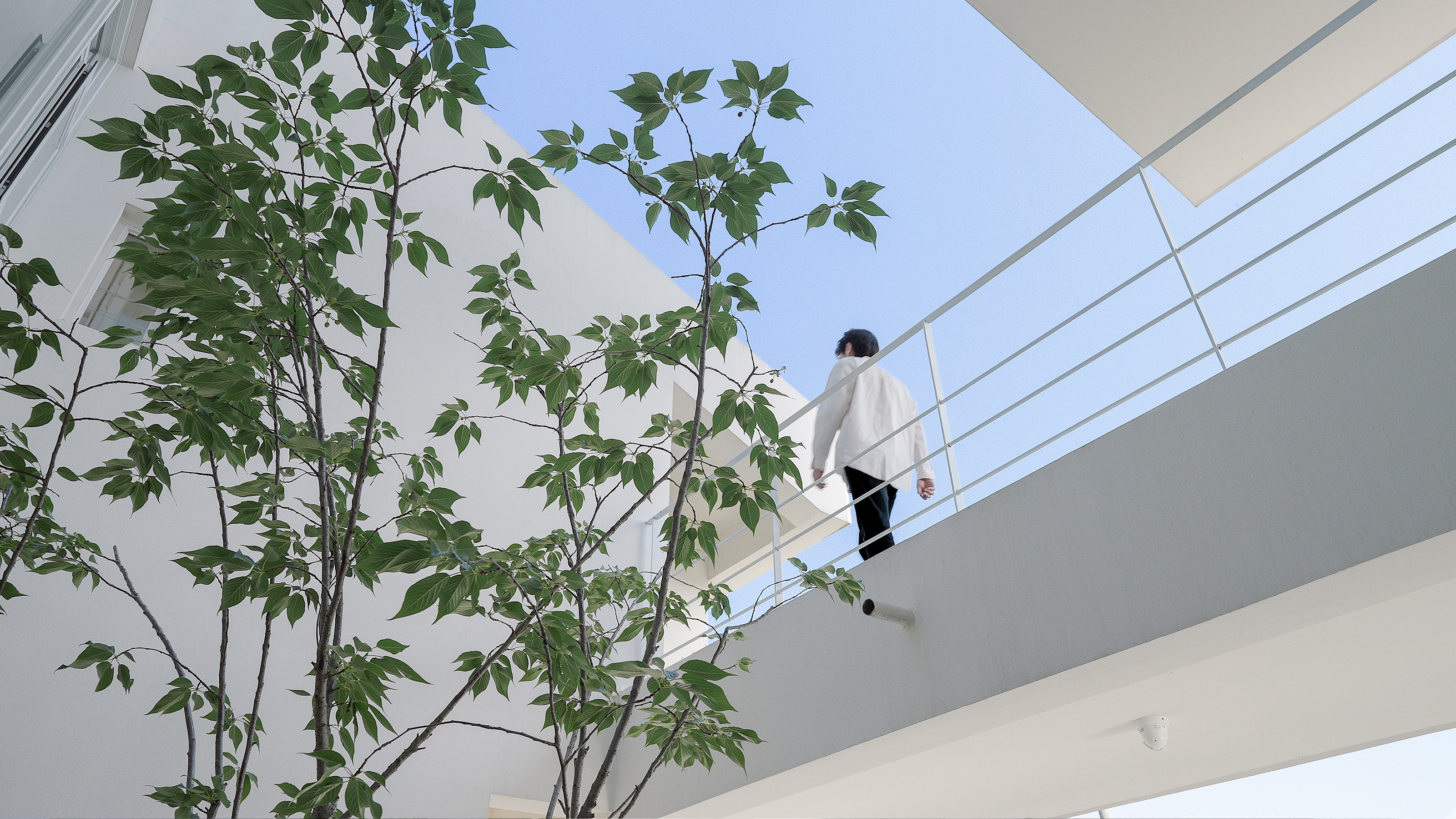 二层连廊,2nd Floor Passage © WM STUDIO
二层连廊,2nd Floor Passage © WM STUDIO
从一亩园到Pudong Villa,从方案到建造落地,是一系列根茎式的、游牧式的创作实践。在每个项目不同的背景和条件下,我们对园林不断地进行解域,与现代系统中不同的粒子相遇再结域,每次的逃逸线无法预测,会得到不同的结果,无法搜寻和论证谱系,仿佛绘制着一张不确定的地图,进行一场园林游牧。
From One Mu Garden to Pudong Villa and from concept to building, these projects are a series of creation and practice, which is rhizomatous and nomadic. In different contexts and under different conditions, we deterritorialize constantly classic garden and reterritorialize it when meeting different particles of modern system. Each time the lines of flight cannot be predicted and we get different results. To seek and to demonstrate the pedigree are impossible, so our creation is like drawing an uncertain map to perform a garden nomad.
项目名称:Garden Nomad, 从一亩园到Pudong Villa
项目类型:项目合辑
设计方:柯笠建筑 Atelier LI
公司网站:www.atelierli.cn
联系邮箱:atelierli@126.com
项目设计:2016-2021
完成年份:2023(Pudong Villa)
主创设计师:李柏、李璇
图片版权:柯笠建筑 Atelier LI,WM STUDIO
Project name: Garden Nomad, From One Mu Garden to Pudong Villa
Project type: Five Projects
Design: Atelier LI
Website: www.atelierli.cn
Contact e-mail: atelierli@126.com
Design year: 2016-2021
Completion Year: 2023 (Pudong Villa)
Leader designers: Bai LI & Xuan LI
Photo credit: Atelier LI, WM STUDIO
发文编辑/网站审核|Yirou 版权©建道筑格ArchiDogs,转载请联系media@archidogs.com 若有涉及任何版权问题,请联系media@archidogs.com,我们将尽快妥善处理。

